For chefs and food lovers, a chef knife tattoo isn’t just body art—it’s a badge of honor. In busy restaurant kitchens, chefs use their knives like paintbrushes. Each slice and chop shows skill and care. A knife on your skin shows your love for cooking.
On Instagram, you can find thousands of posts under #CulinaryInk. From tiny paring knives to full sleeve designs, this trend is growing fast. Whether you’re a home cook or a Michelin-star chef, a kitchen knife tattoo carves your passion right into your skin.
Chef Knife Tattoo Meaning Decoded
A. Core Meanings
- Skill & Mastery
A chef’s knife is more than a tool. It’s an extension of the chef’s hand. A knife tattoo shows years of practice. It honors the steady cut and the perfect dice. - Sacrifice & Resilience
Kitchens can get hot and messy. Chefs work long hours under pressure. A tattoo with a cracked handle or a “bloodied” tomato can remind you of every burn and every rush hour survived. - Creativity & Nourishment
Good chefs feed both body and soul. A knife next to herbs or veggies shows how food can bring life and art together. - Professional Identity
For line cooks, sous chefs, and head chefs, a knife tattoo can act like a uniform badge. It tells the world, “I belong in the kitchen.”
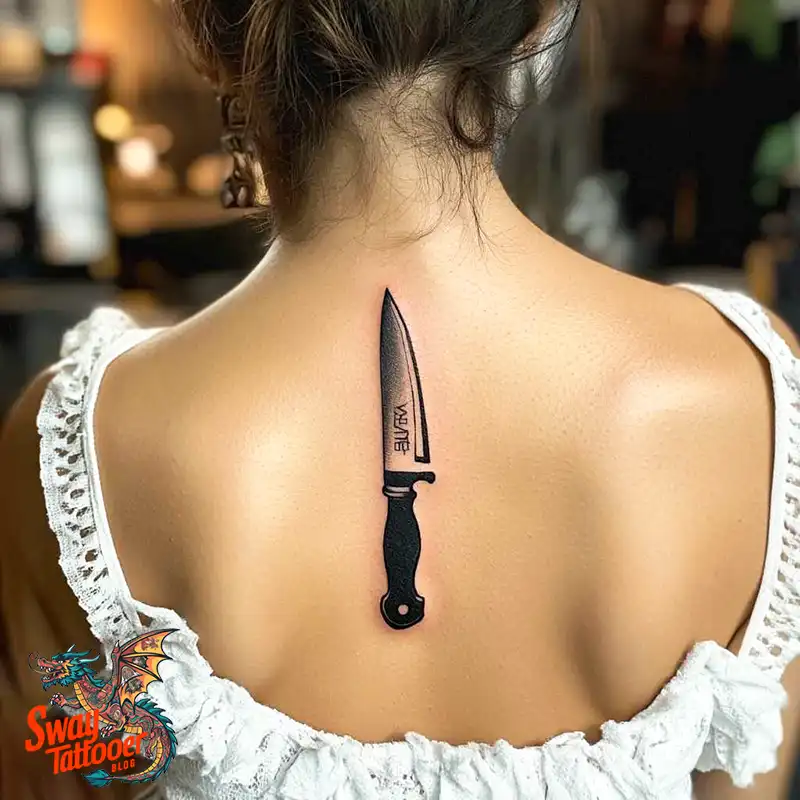
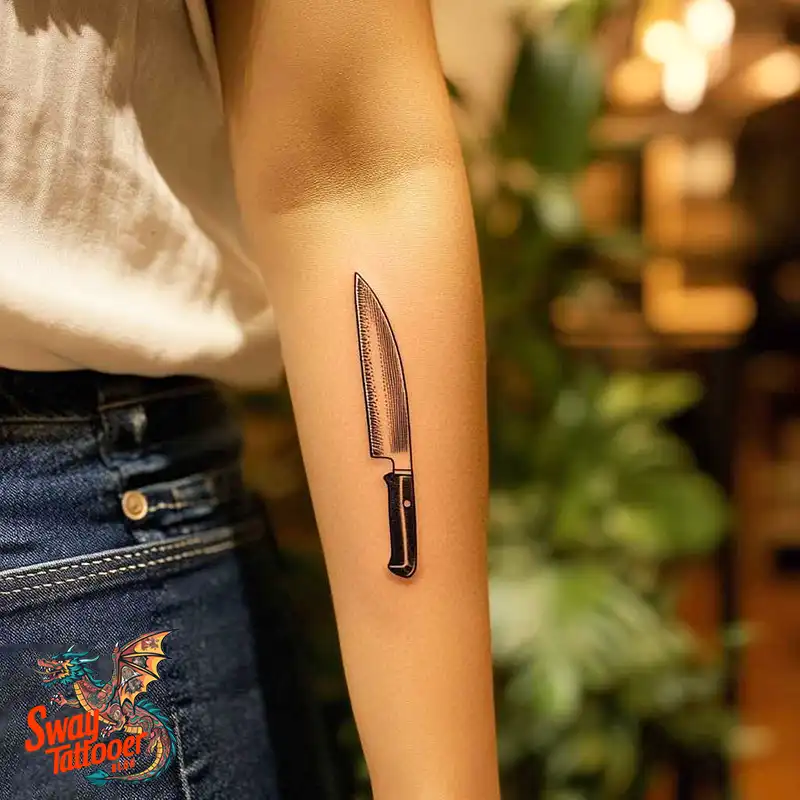
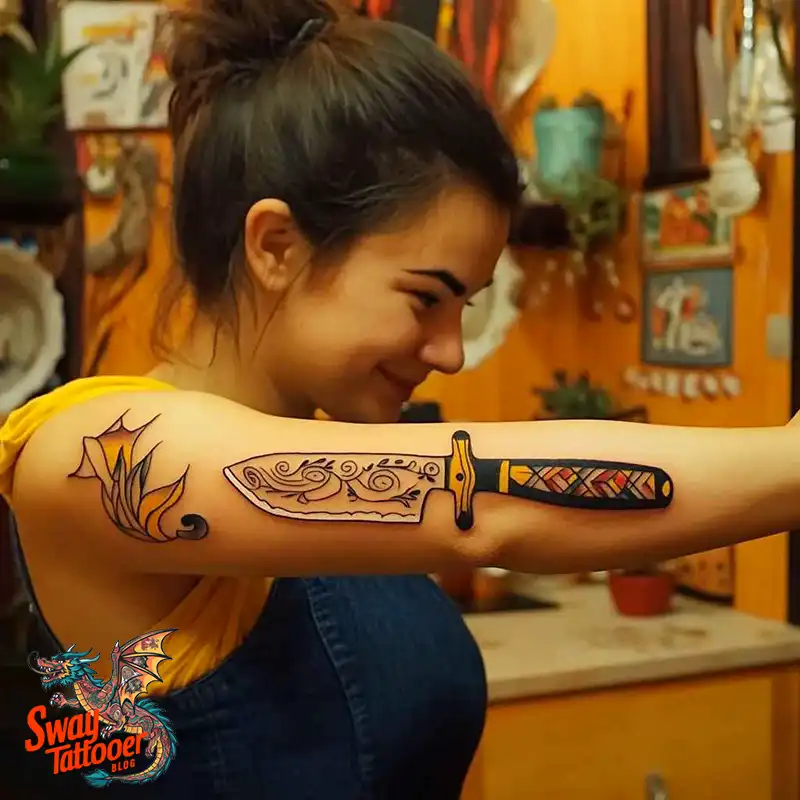
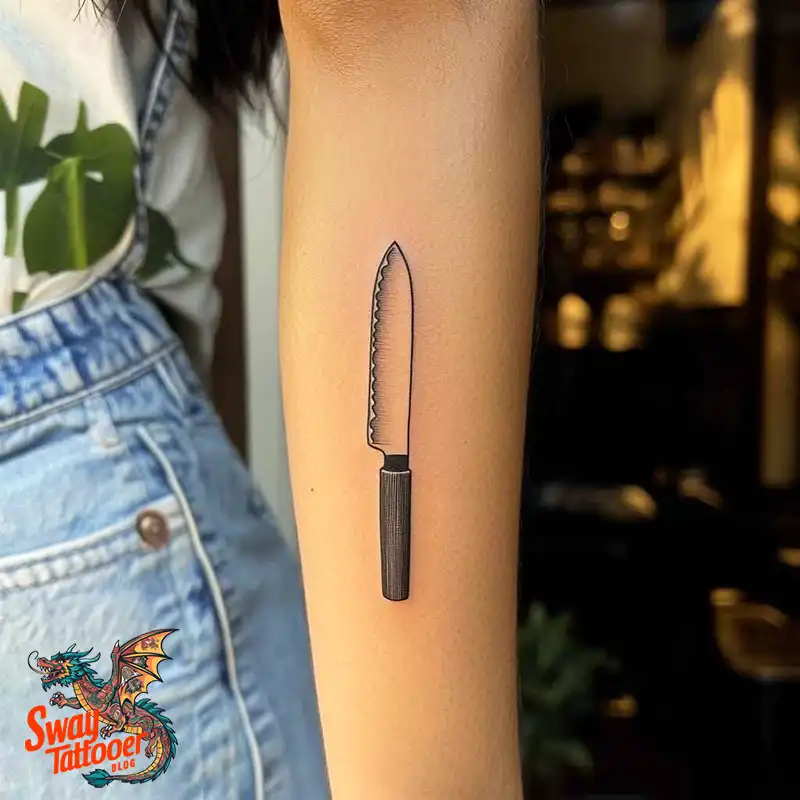
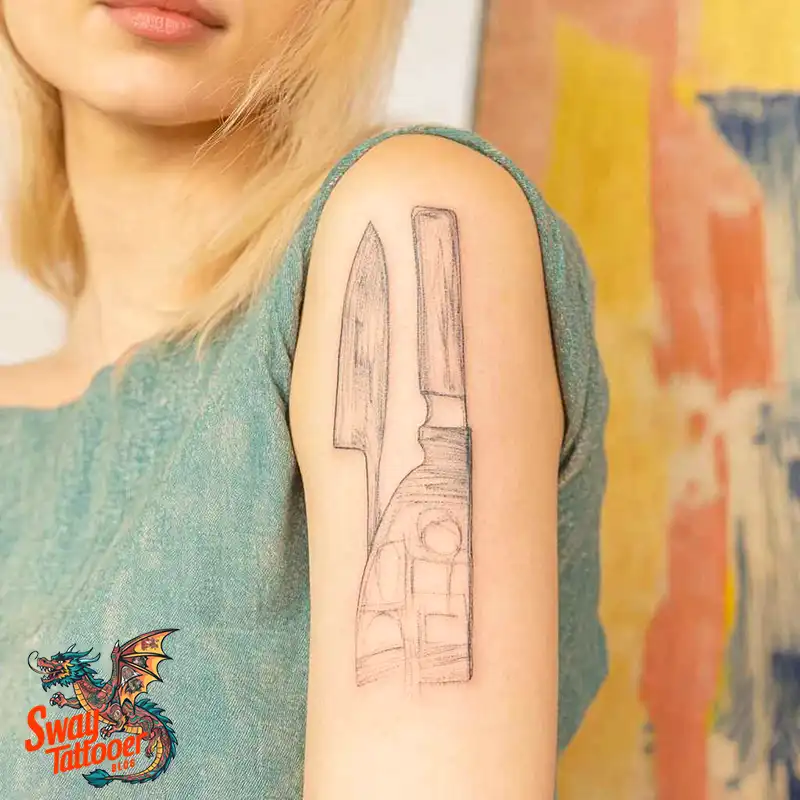
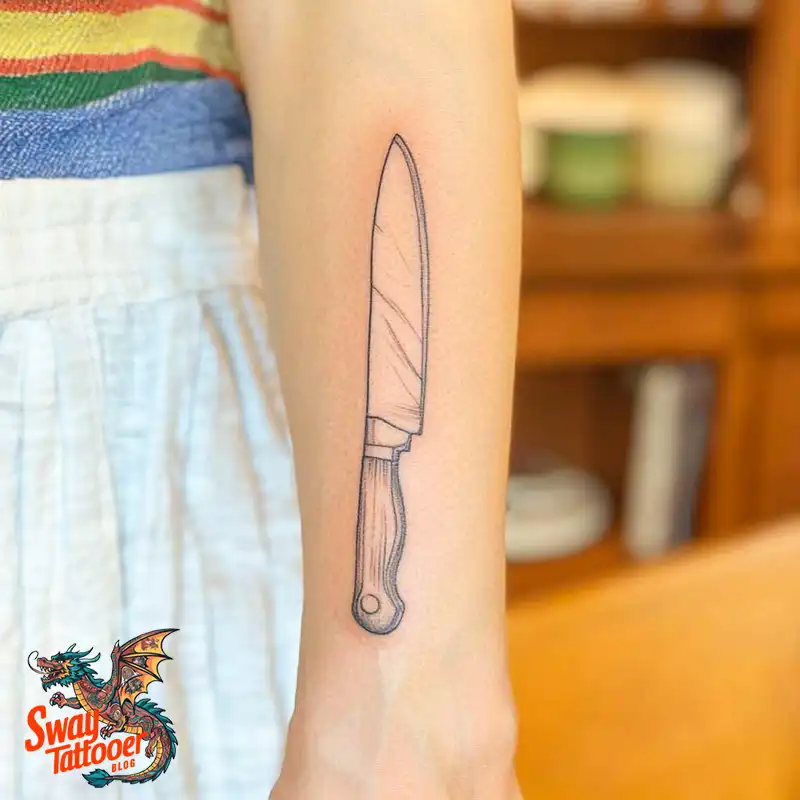
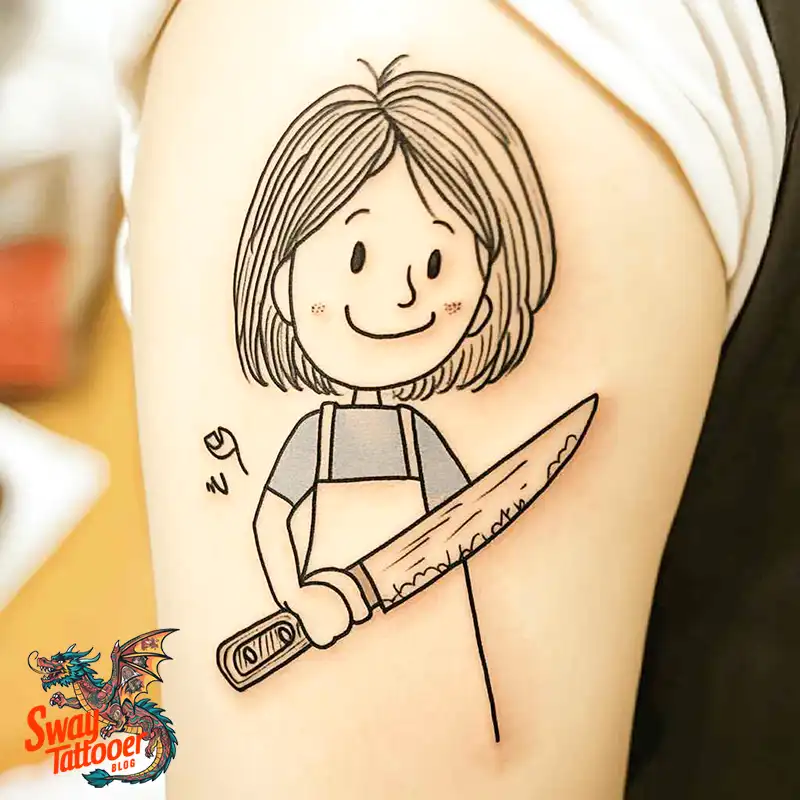
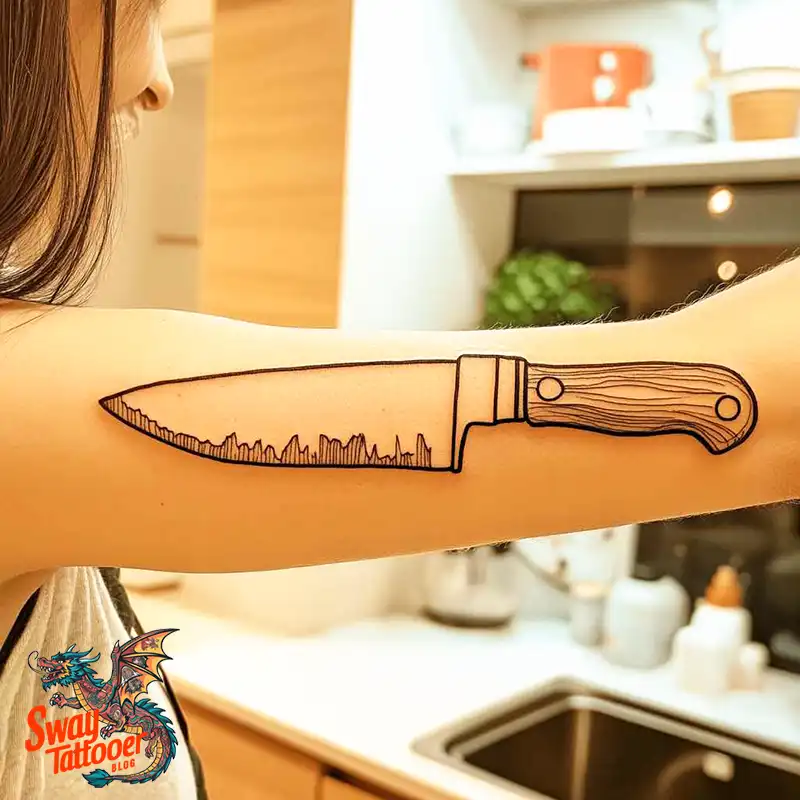
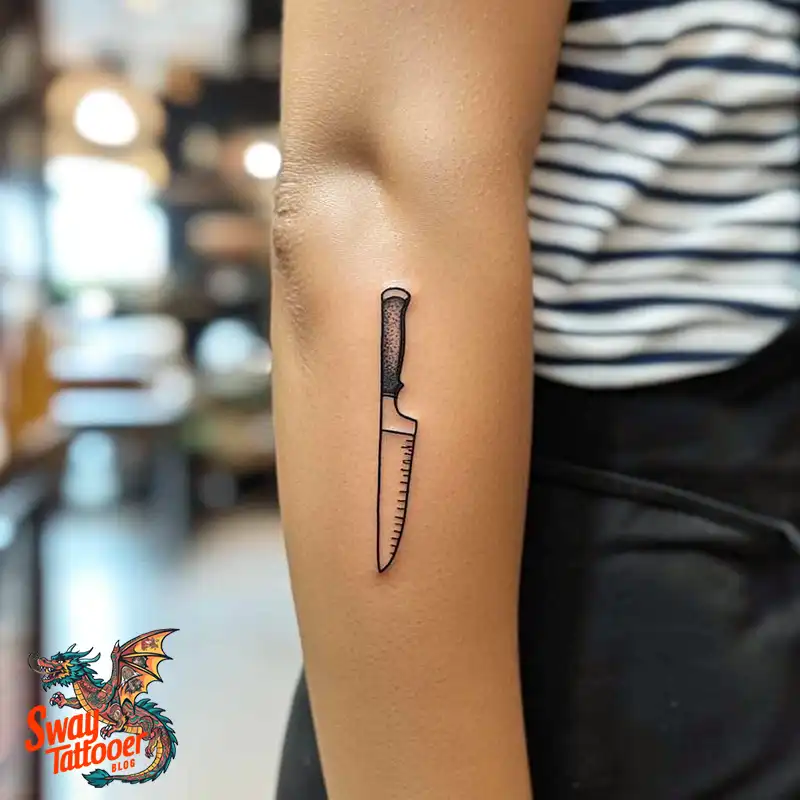
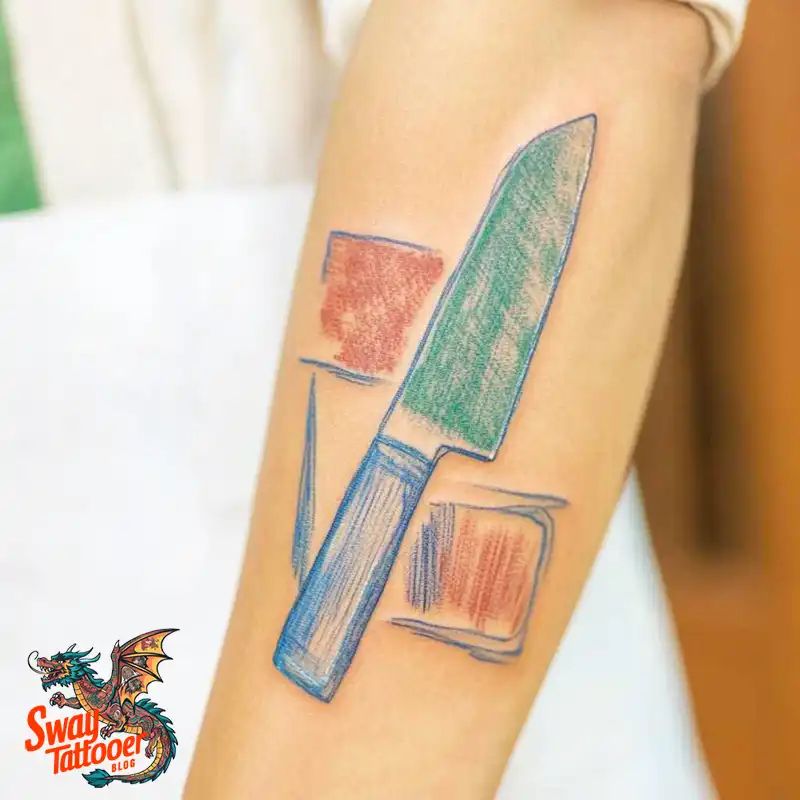
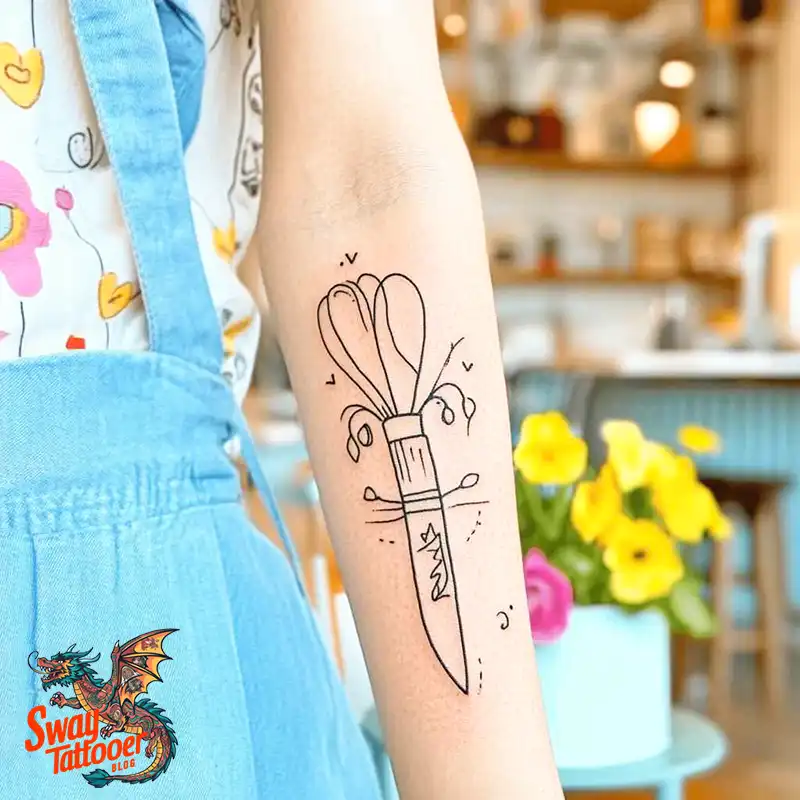
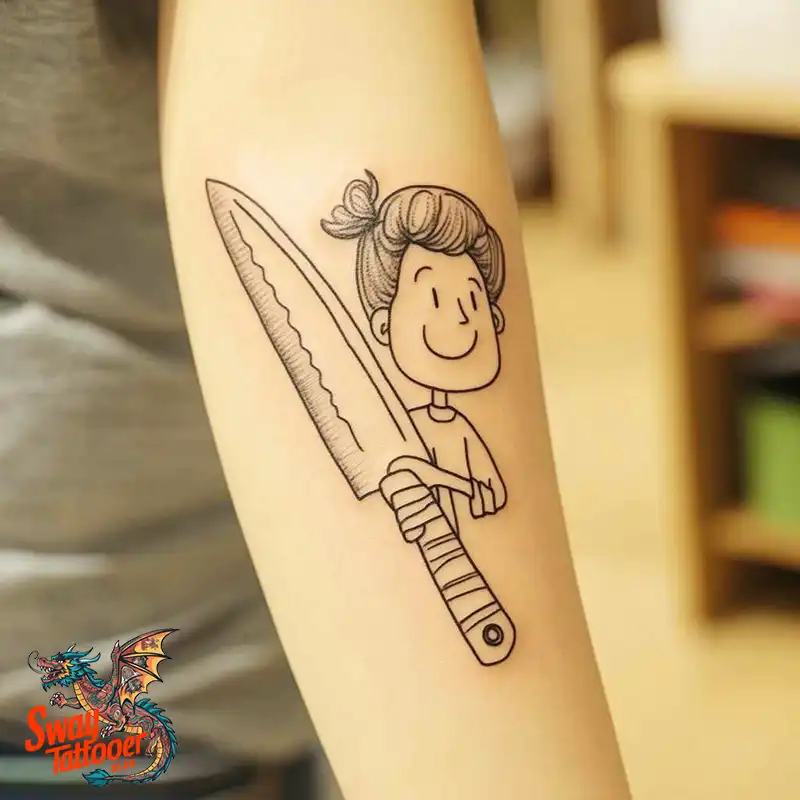
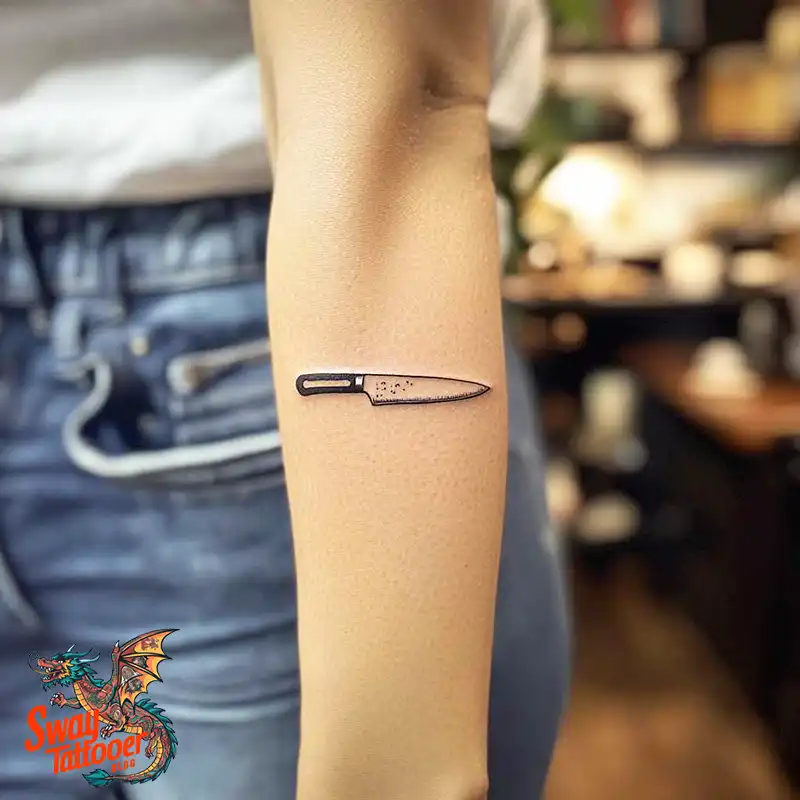

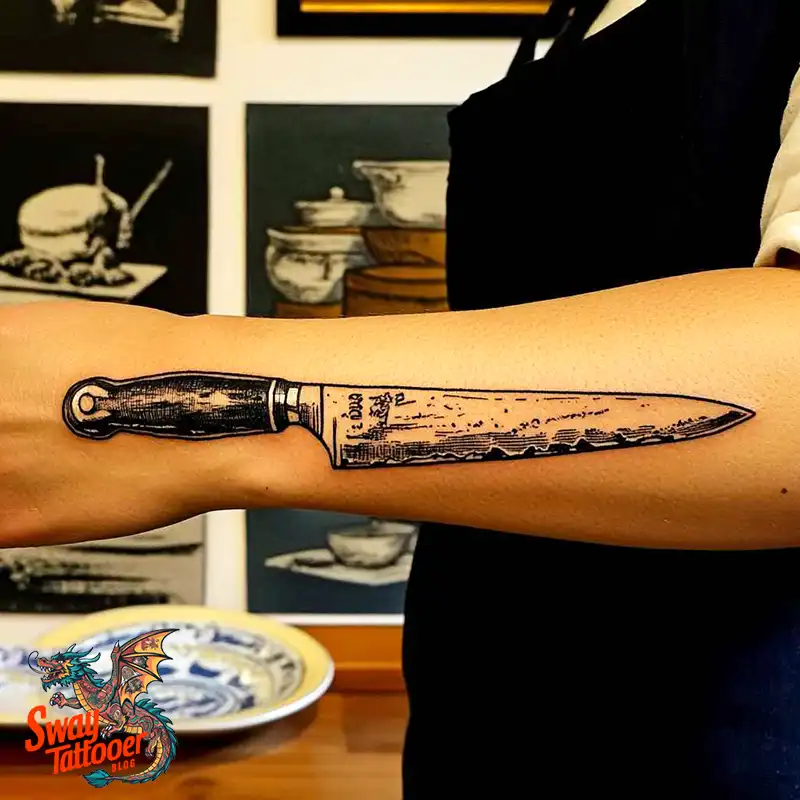


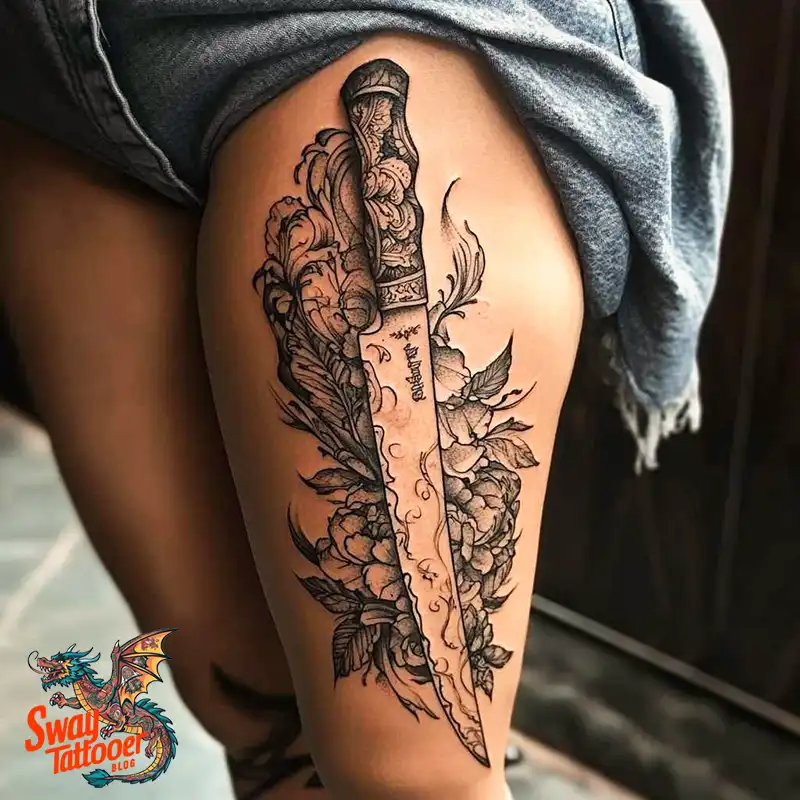
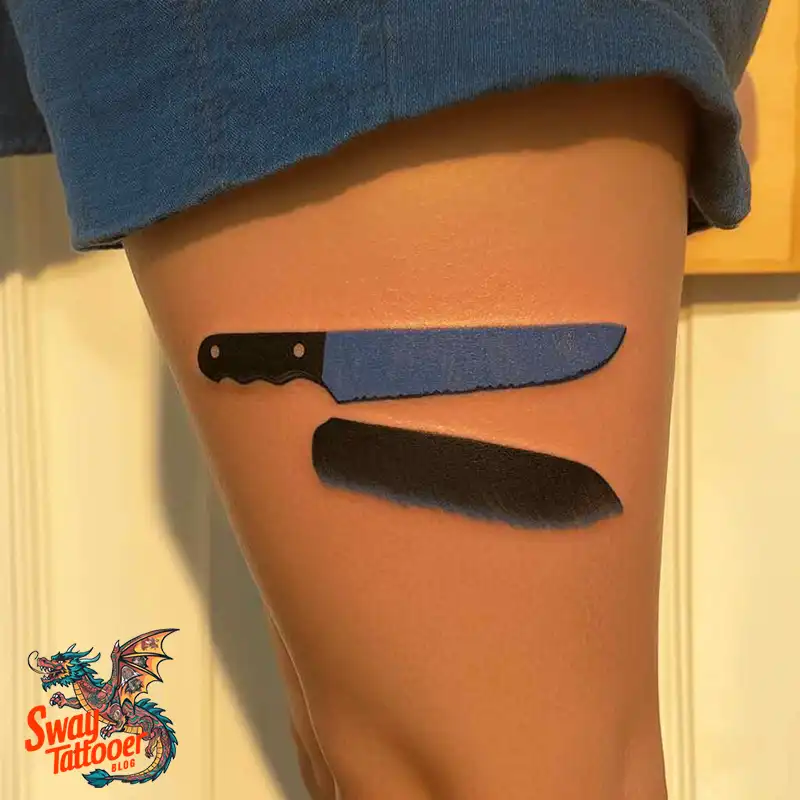
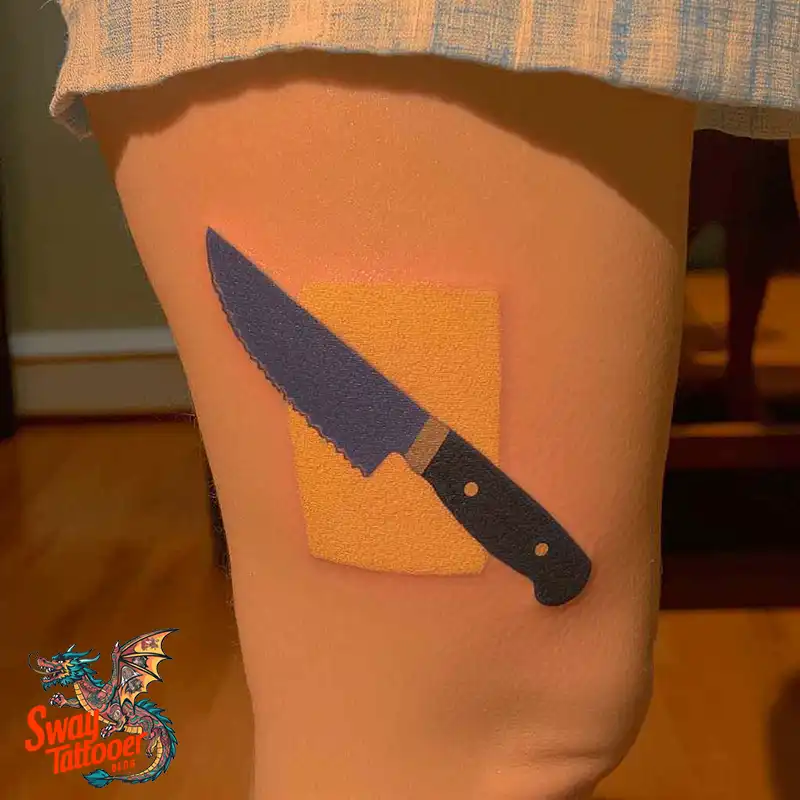
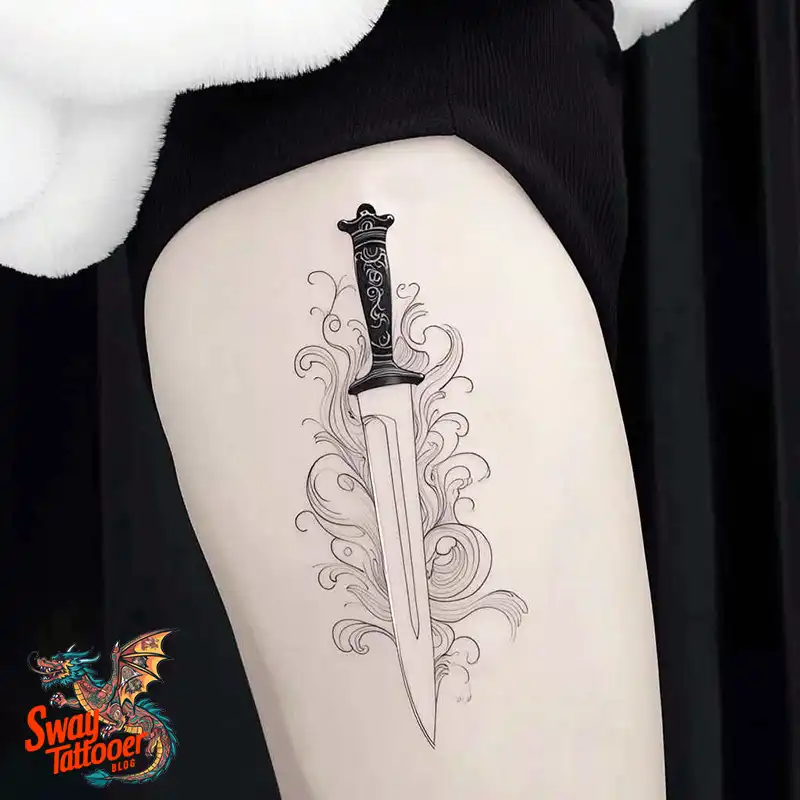
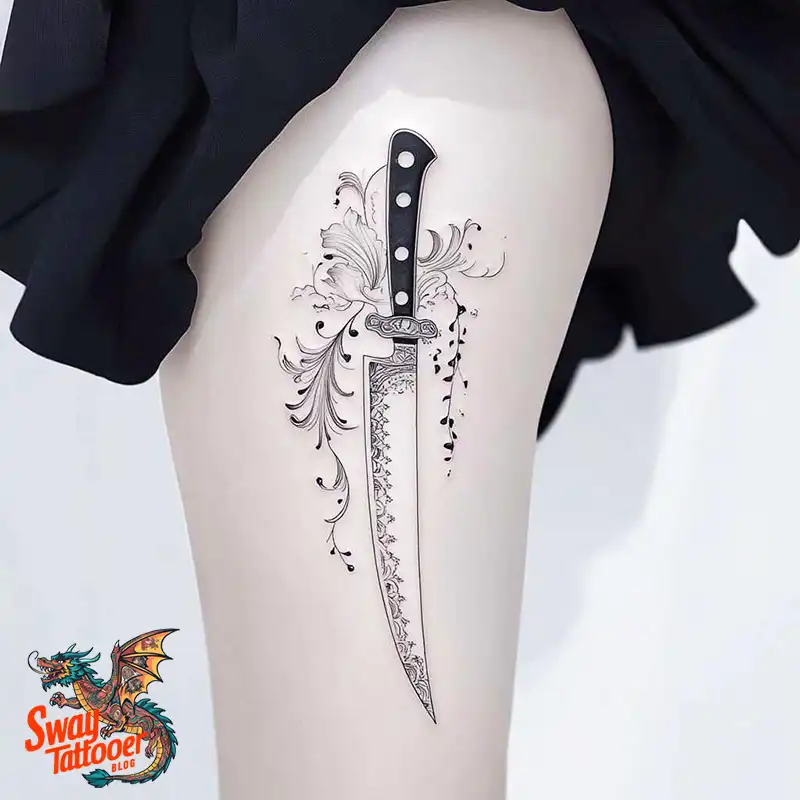
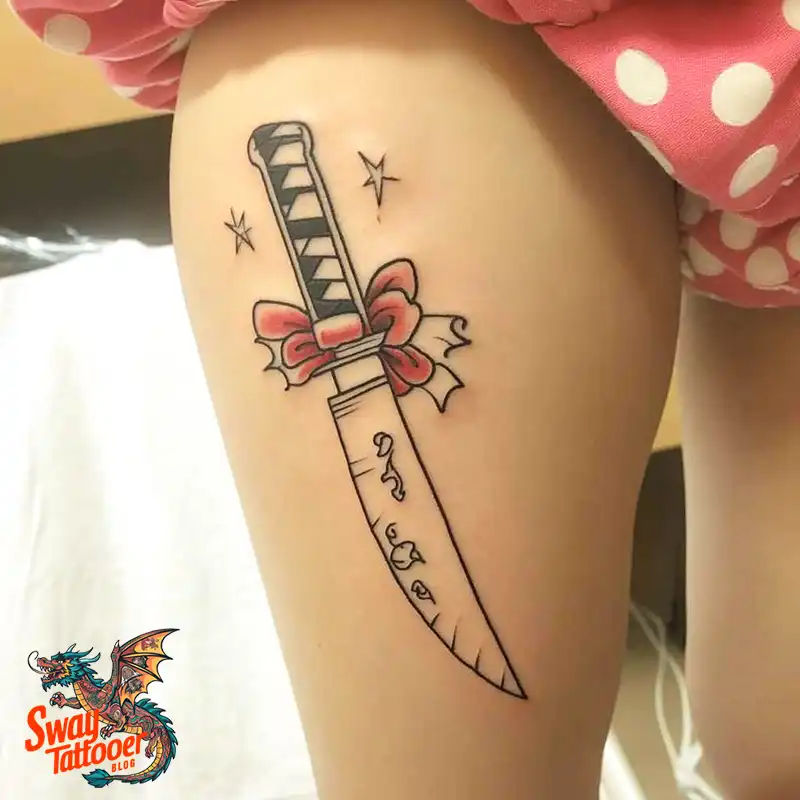
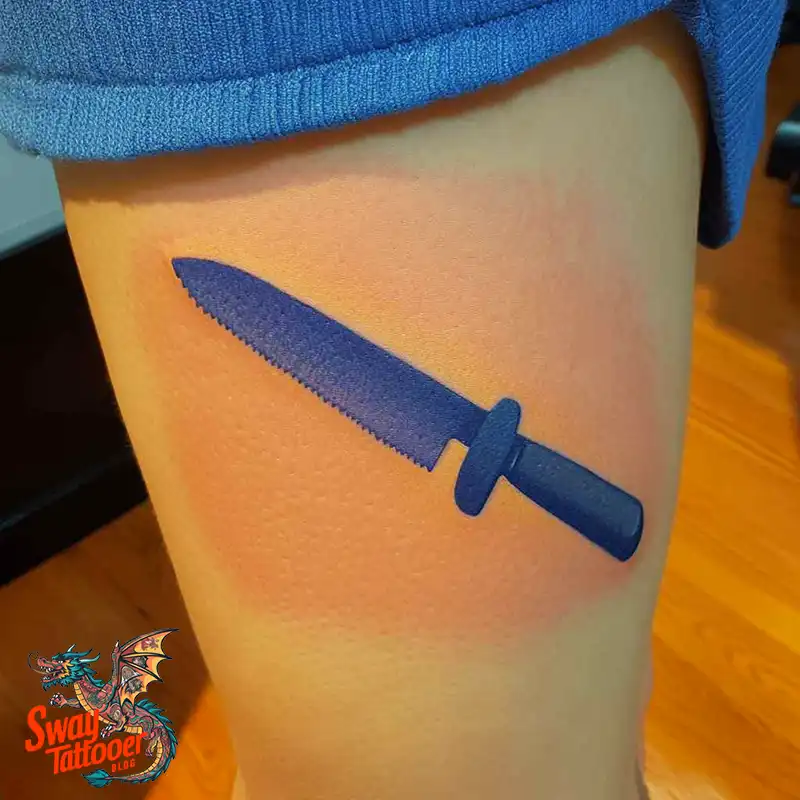
B. Cultural Layers
- Japanese Hocho
In Japan, knives (hocho) are almost like religious artifacts. You might add cherry blossoms or kanji characters to honor that tradition. - French Couteau
In France, knives carry Escoffier-era elegance. You could ink a slim, polished blade to nod to classic haute cuisine. - Butcher Traditions
Meat artisans often choose cleavers or scimitars. These bold tools stand for strength and deep respect for the craft of butchery.
Design Ideas: From Minimalist to Masterpiece
A. Iconic Styles
| Style | Best For | Example |
|---|---|---|
| Hyperrealism | Detail lovers | Photorealistic Wüsthof blade with onion slices |
| Minimalist | Subtle statements | Single-line knife silhouette |
| Japanese Fusion | Tradition meets art | Sakura-wrapped blade |
| Ingredient Mashup | Storytelling | Knife piercing chili or herb bouquet |
| Traditional | Bold & timeless | Anchor + knife in sailor-style motif |
B. Composition Elements
- Context Matters
A lone blade looks sharp, but a knife on a cutting board feels real. Flames behind it can add a sense of heat and action. - Personal Touches
• Handle Engravings: Your initials or a special date.
• “Blood” Details: Red-ink pomegranate seeds instead of red ink alone.
• Cracks & Wear: Show off a knife that’s seen years of use.
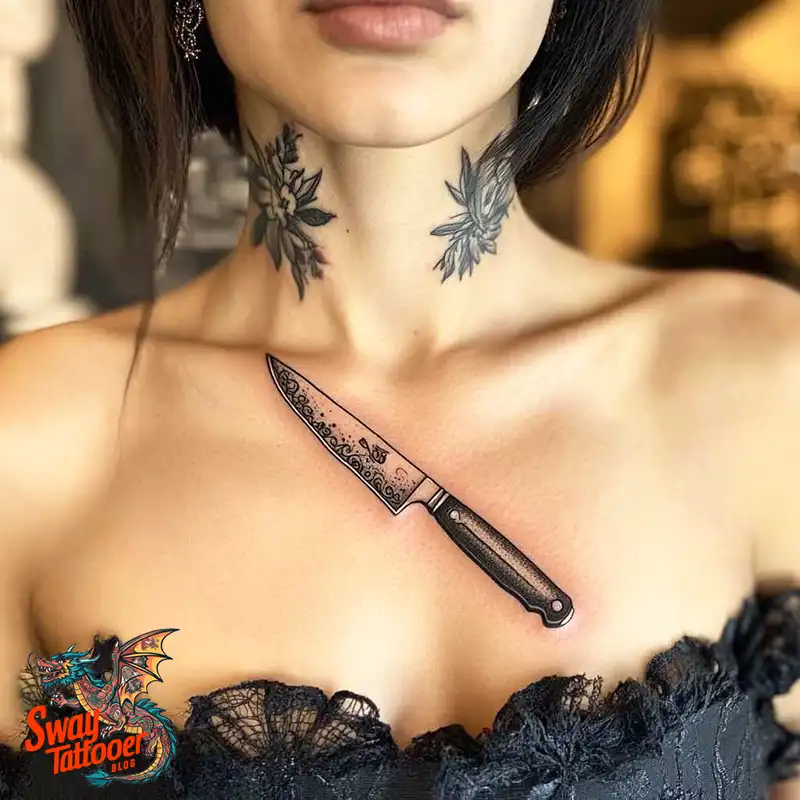
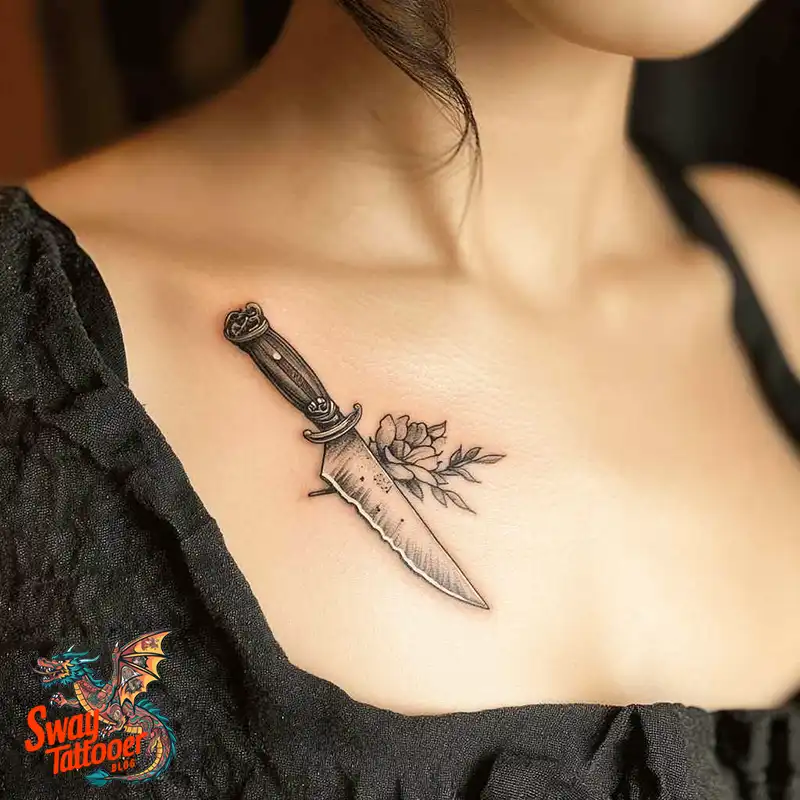
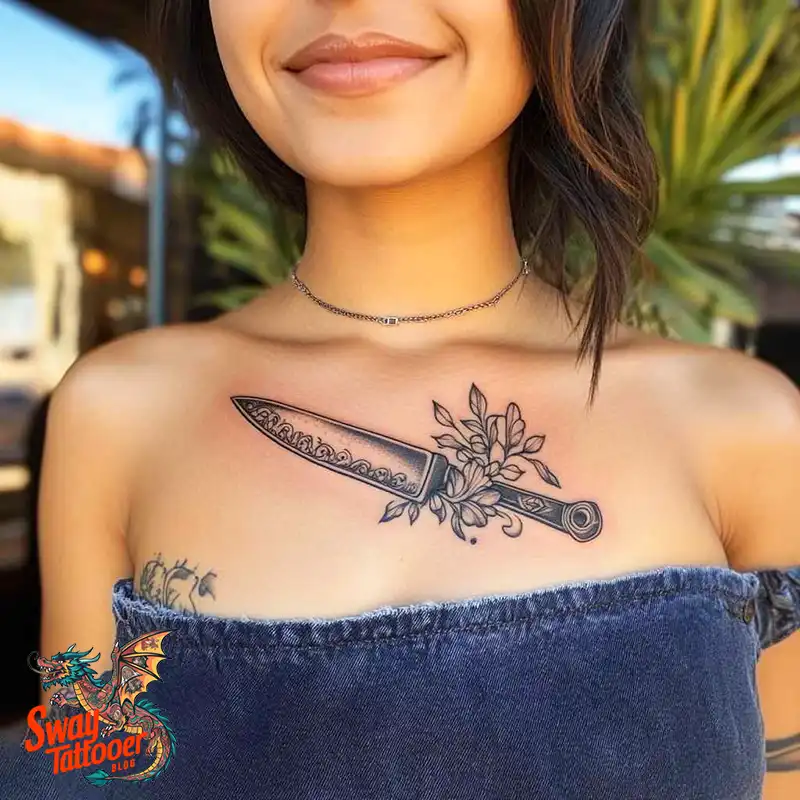
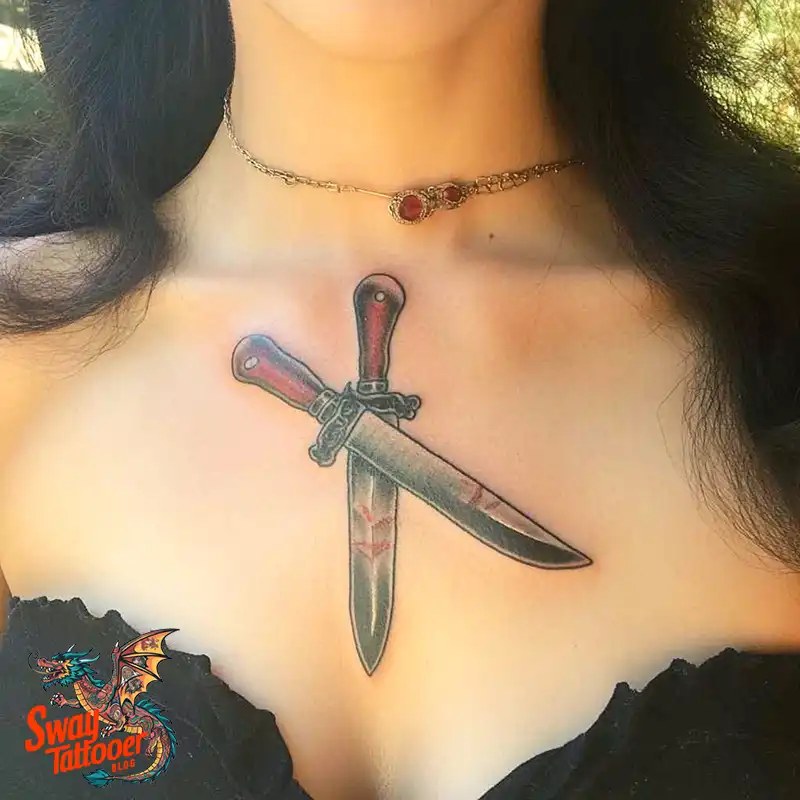
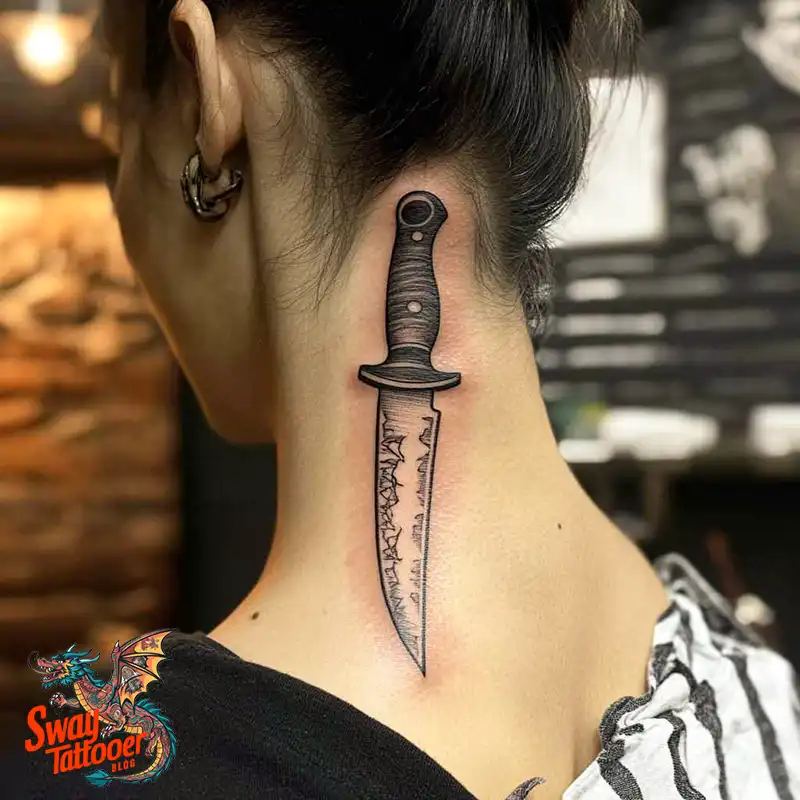
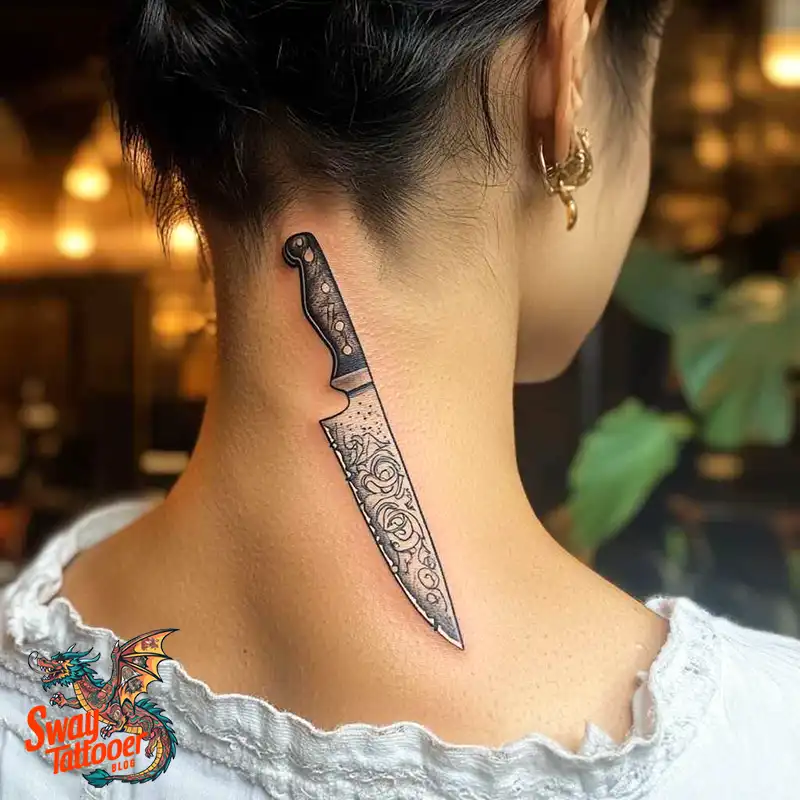
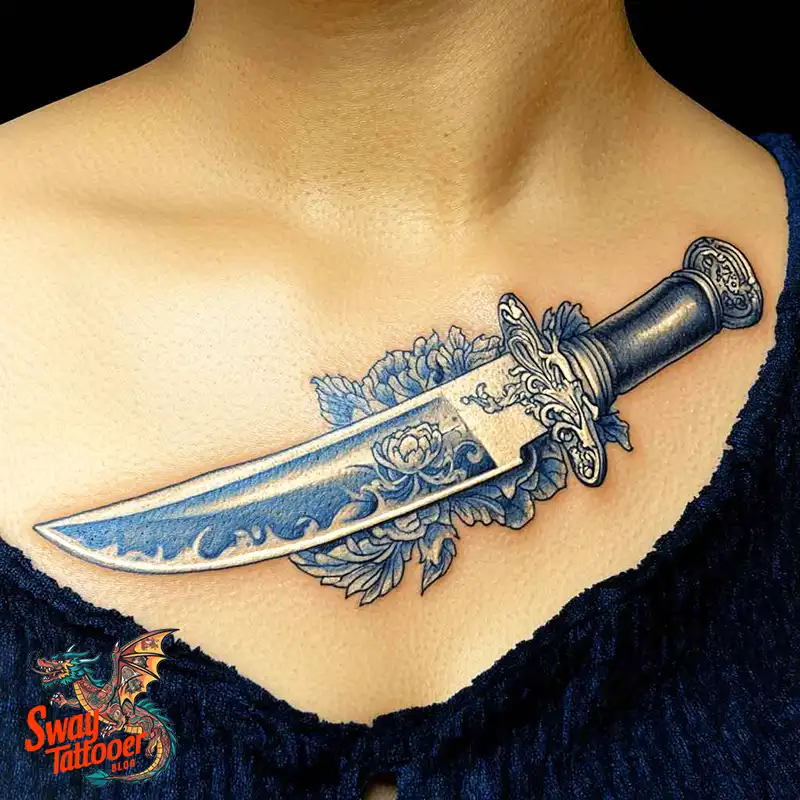
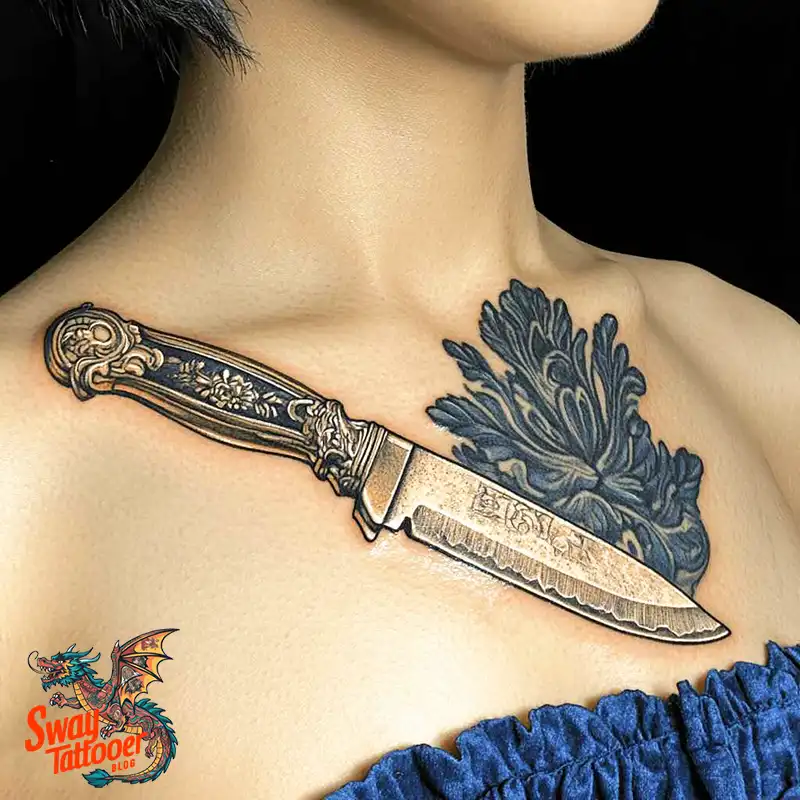
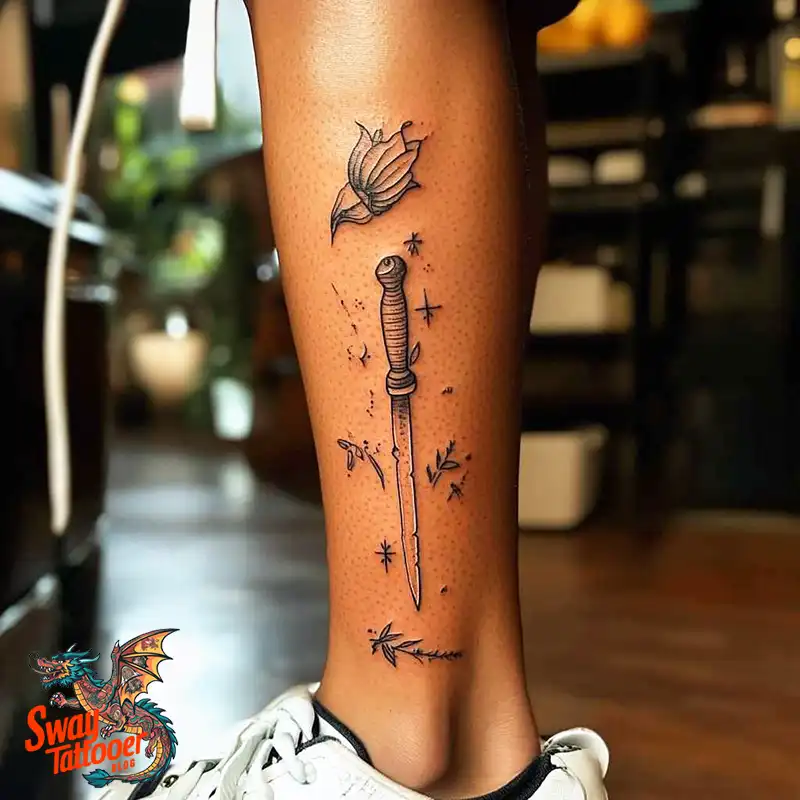
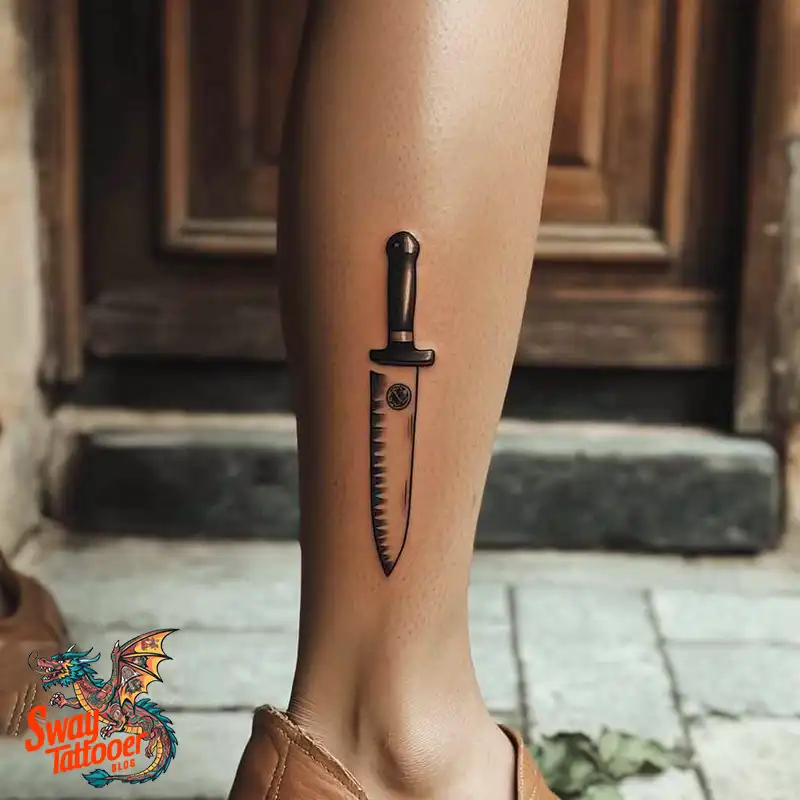
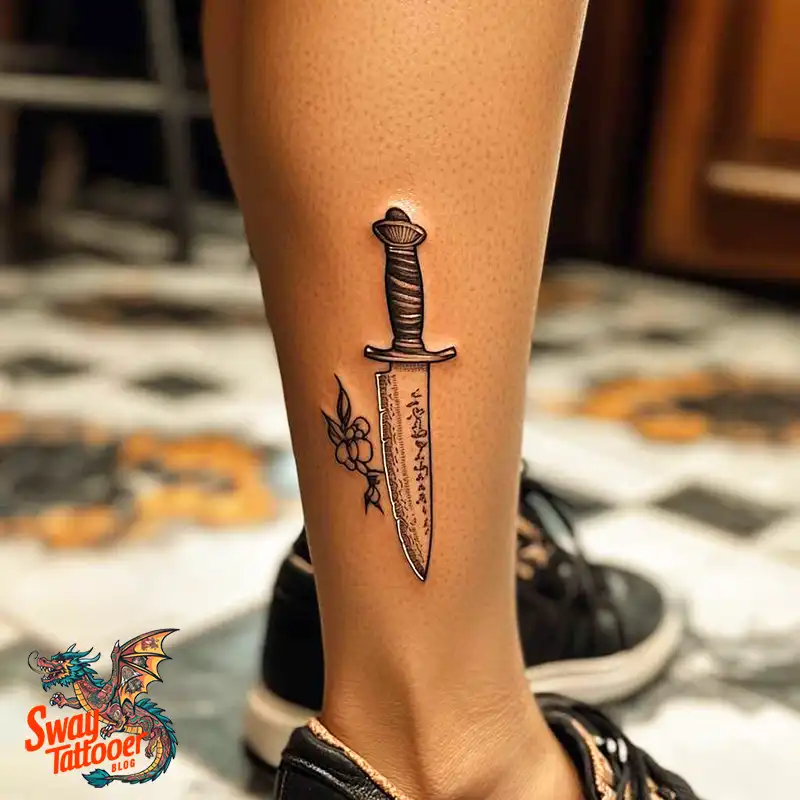
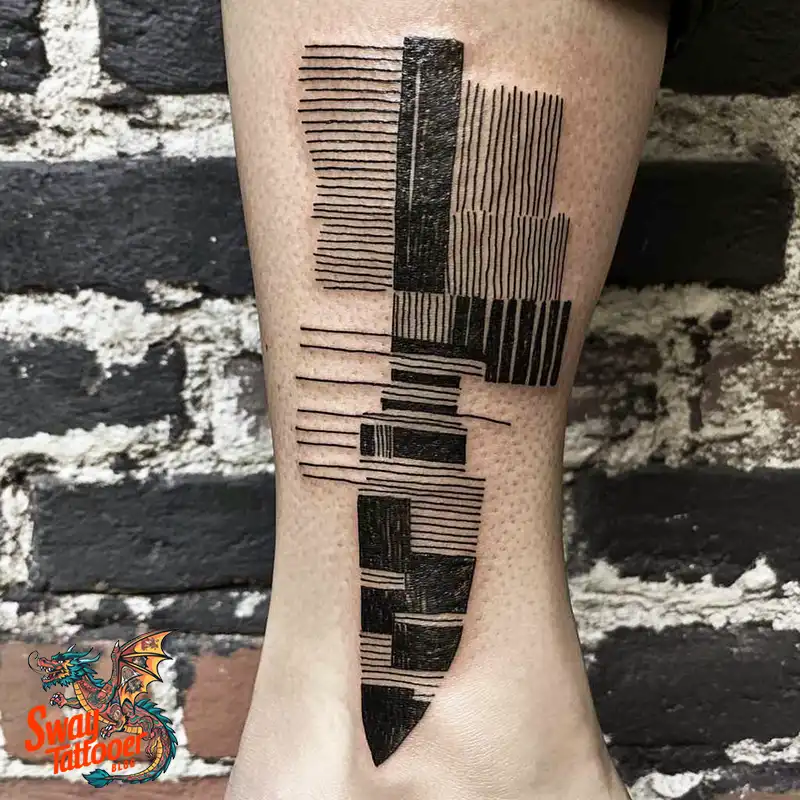
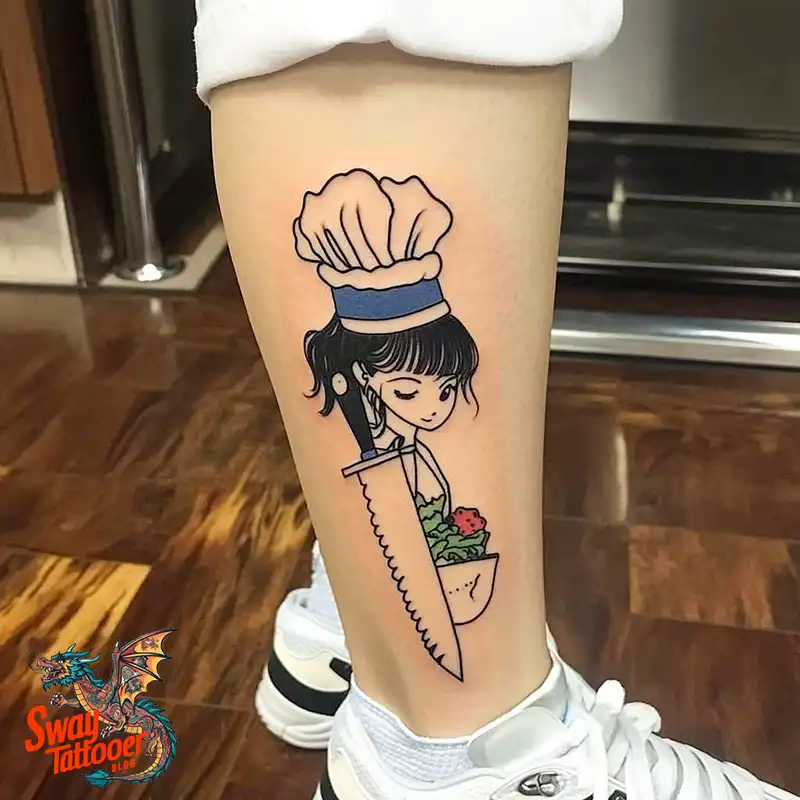
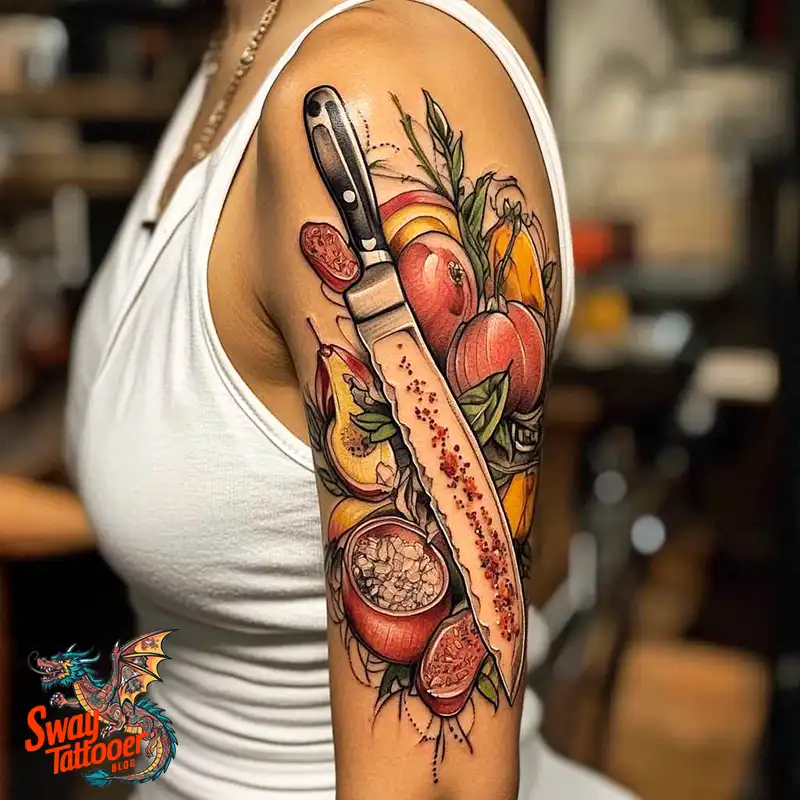
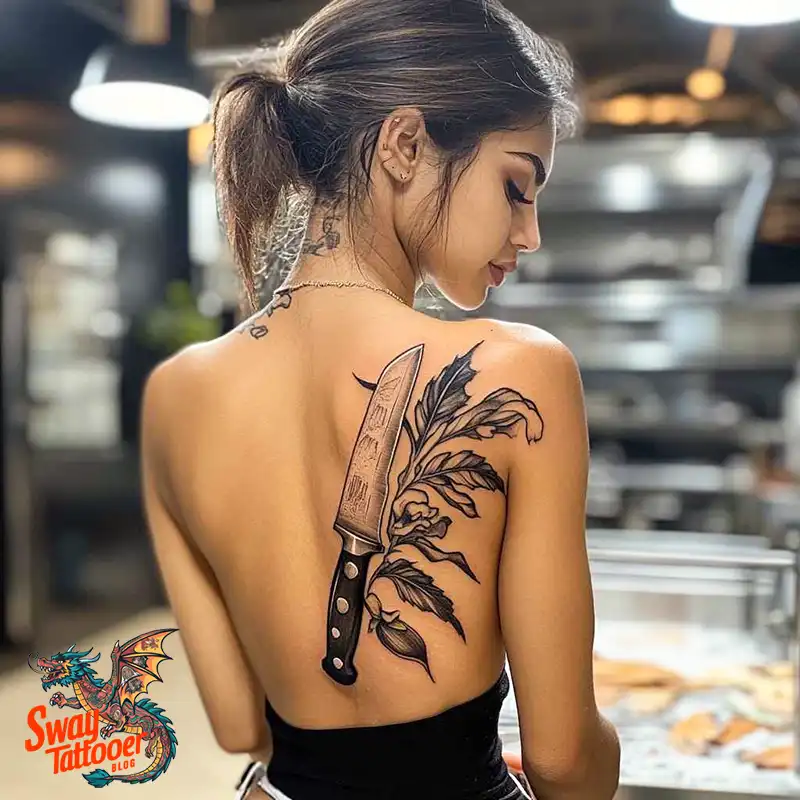
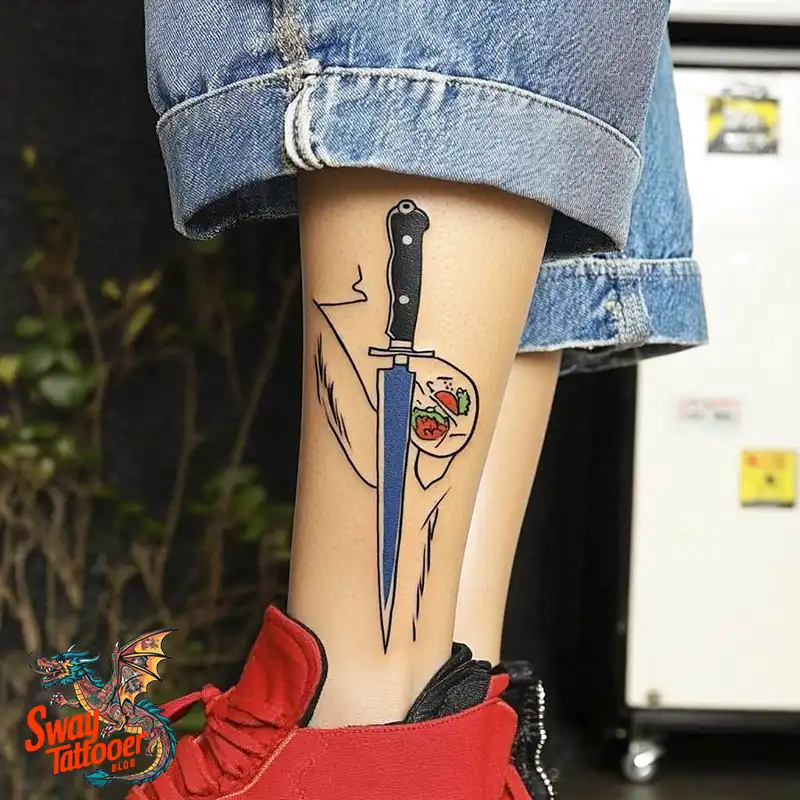
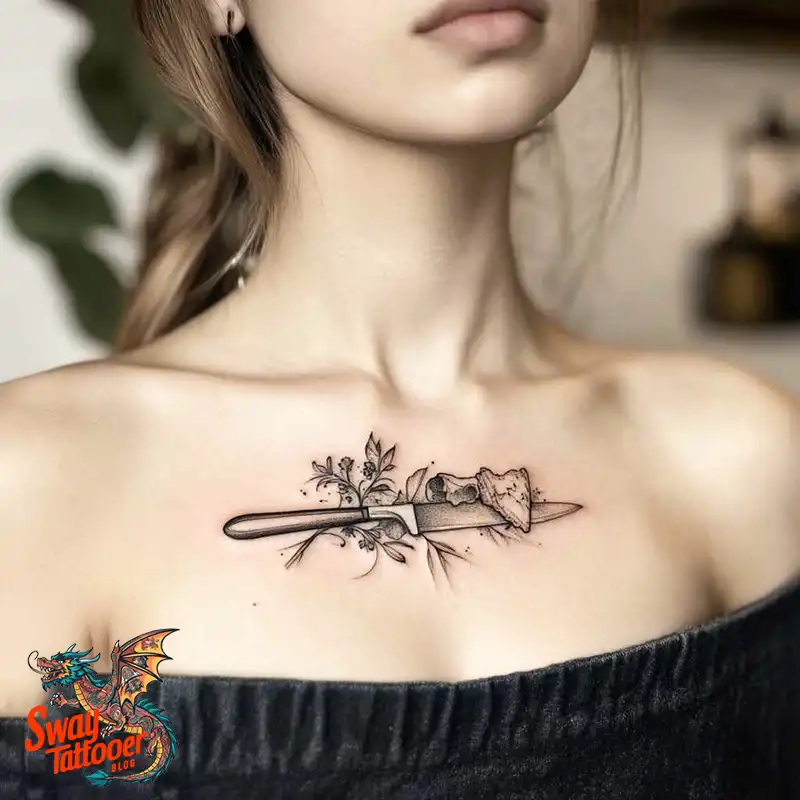
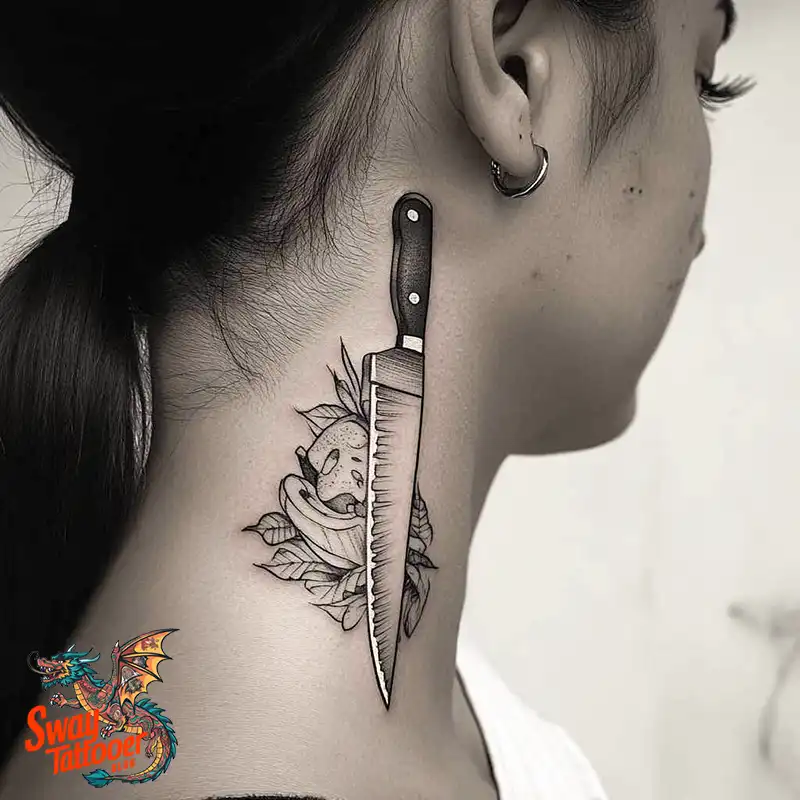
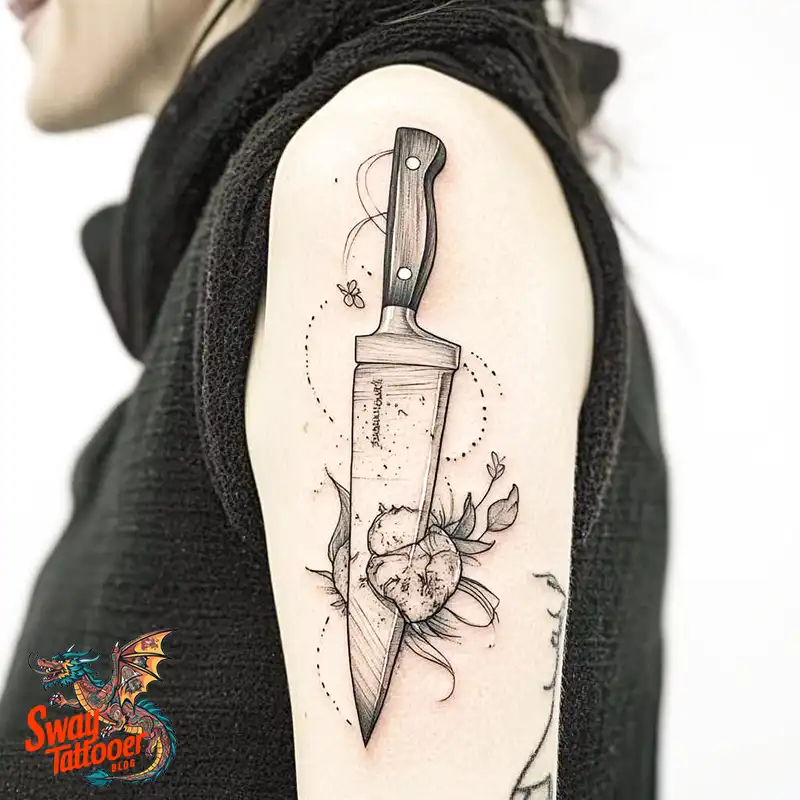
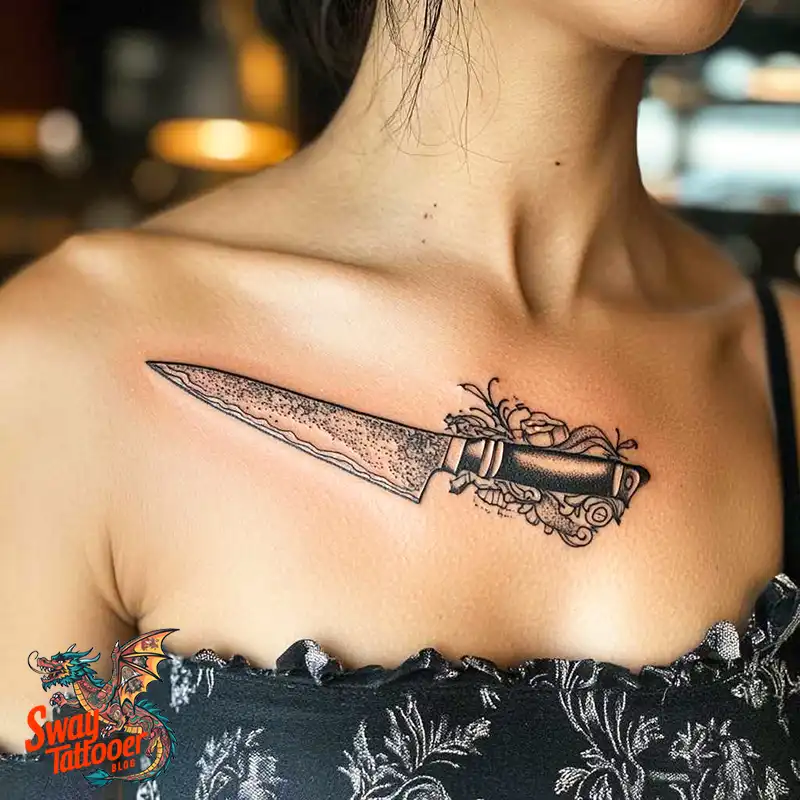
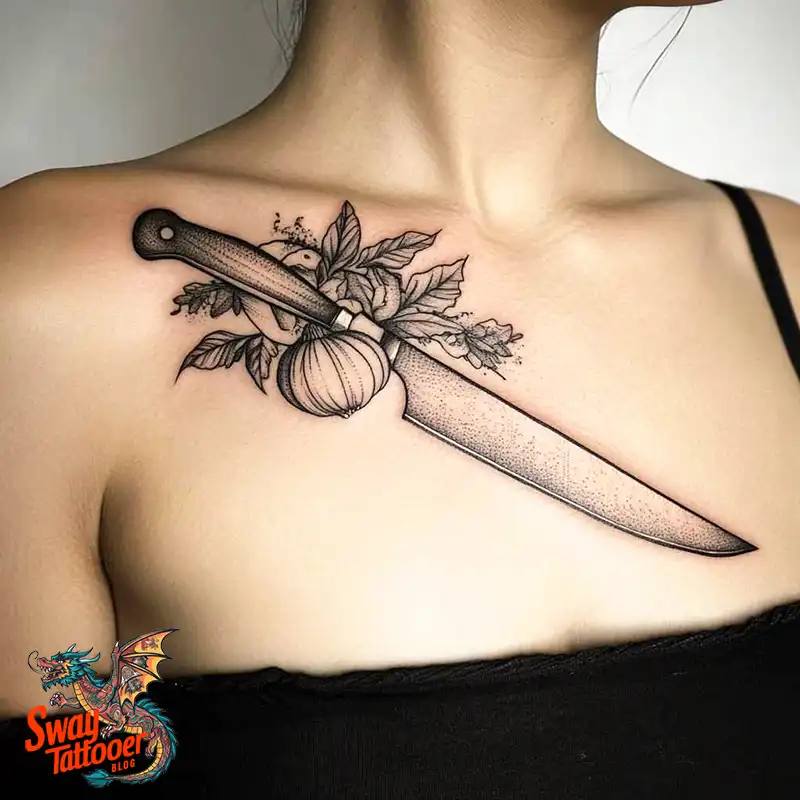
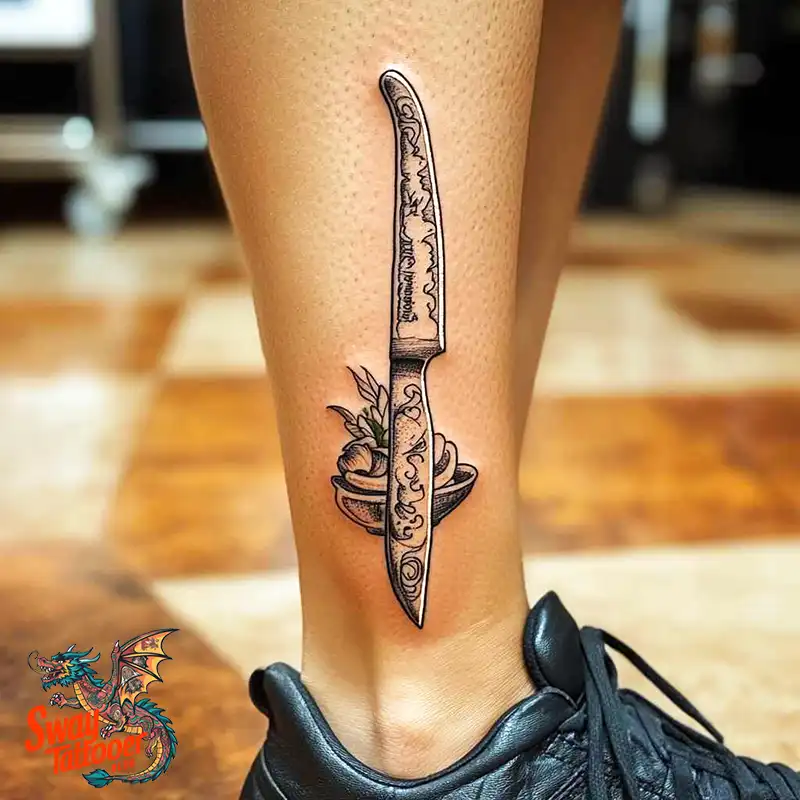
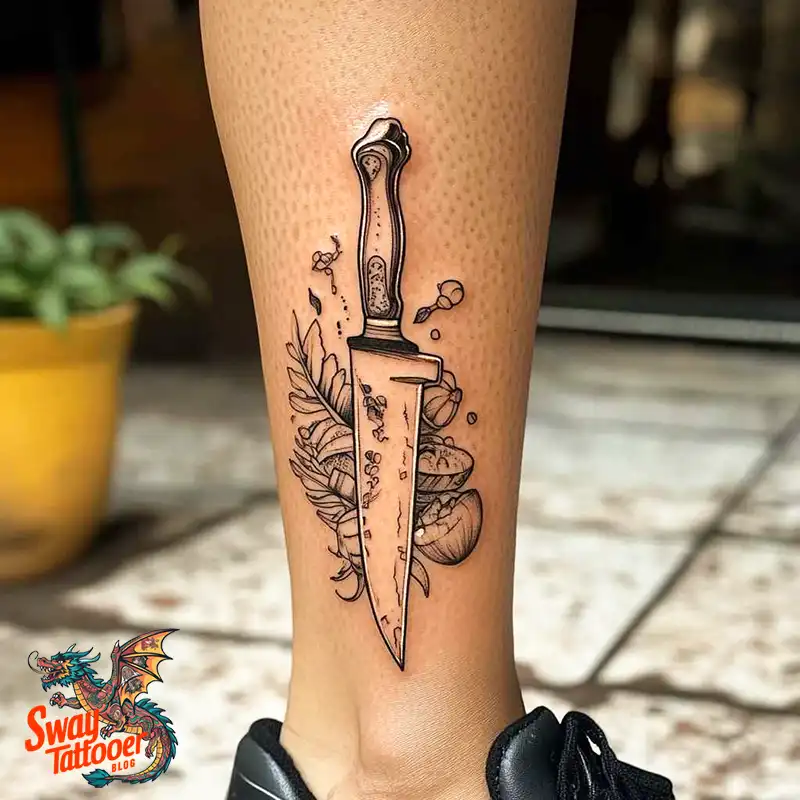
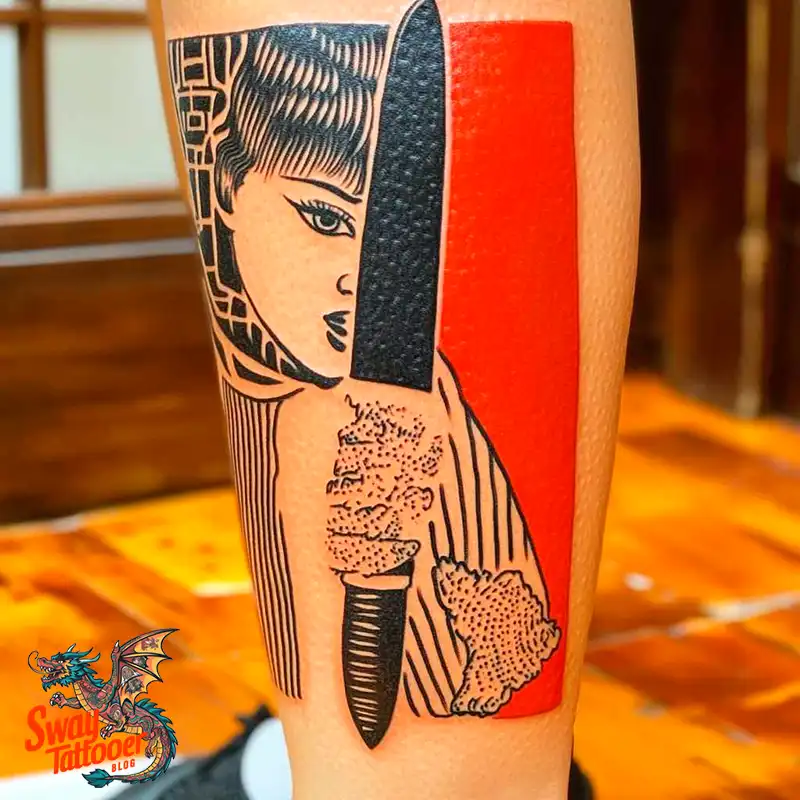
Placement & Visibility:
- Hands & Forearms
Great for chefs who want to show their ink while they work. Just know these spots fade faster—washing and scrubbing can blur the lines. - Back & Ribs
Big space for a knife in action—maybe slicing through veggies or standing next to a chef’s coat. - Calf & Thigh
Easy to hide under pants, but still large enough for a vertical blade design. - Collarbone
A small paring knife can sit just above your heart. It’s a quiet nod to your love of cooking.
Pro Tip: Avoid palm or finger placements. The constant motion there makes tattoos fade too quickly.
Style Showcase: Art Techniques That Slice
- Black & Gray Realism
This style looks just like a photo. The knife’s handle shines with wood grain. The blade glints like real steel. It feels alive on your skin. - Illustrative
Think of a knife with wings or playful faces on fruits. This style mixes fun art with kitchen tools. - Geometric
Blades join circles, triangles, or hexagons. Lines fit together like a puzzle. It shows order and creativity. - Trash Polka
Bold black shapes meet bright red splashes. It feels like a high-energy kitchen, full of heat and action. - American Traditional
Thick lines and simple colors make a strong statement. You might add roses, anchors, or ribbons around the knife.
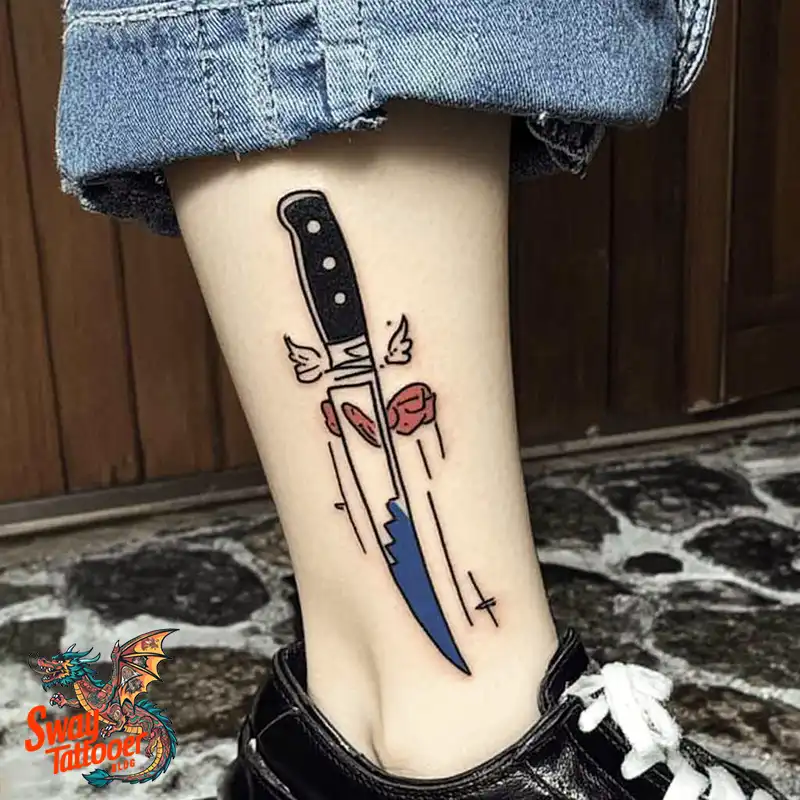
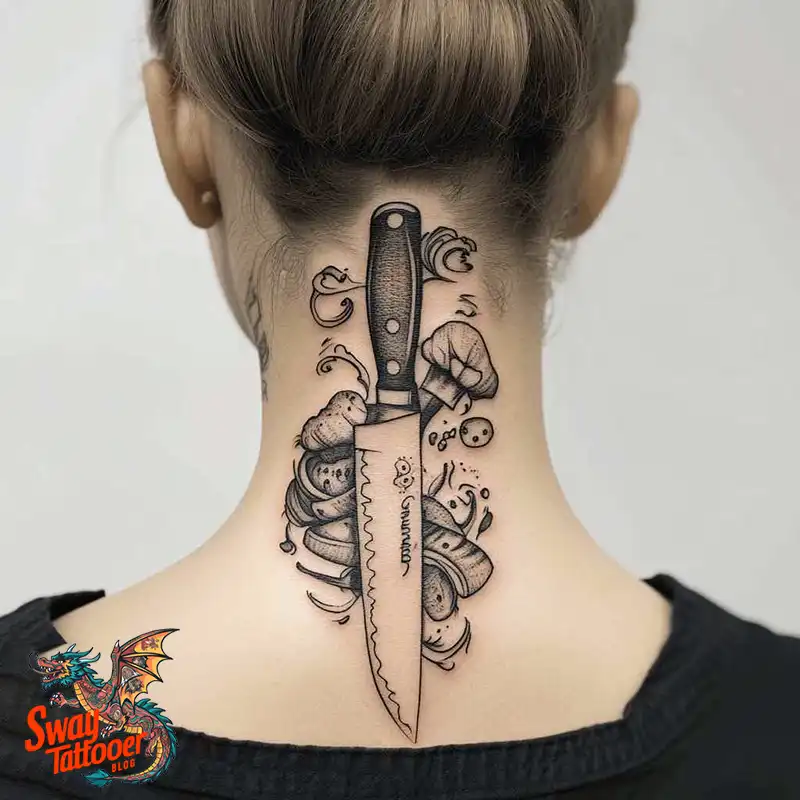
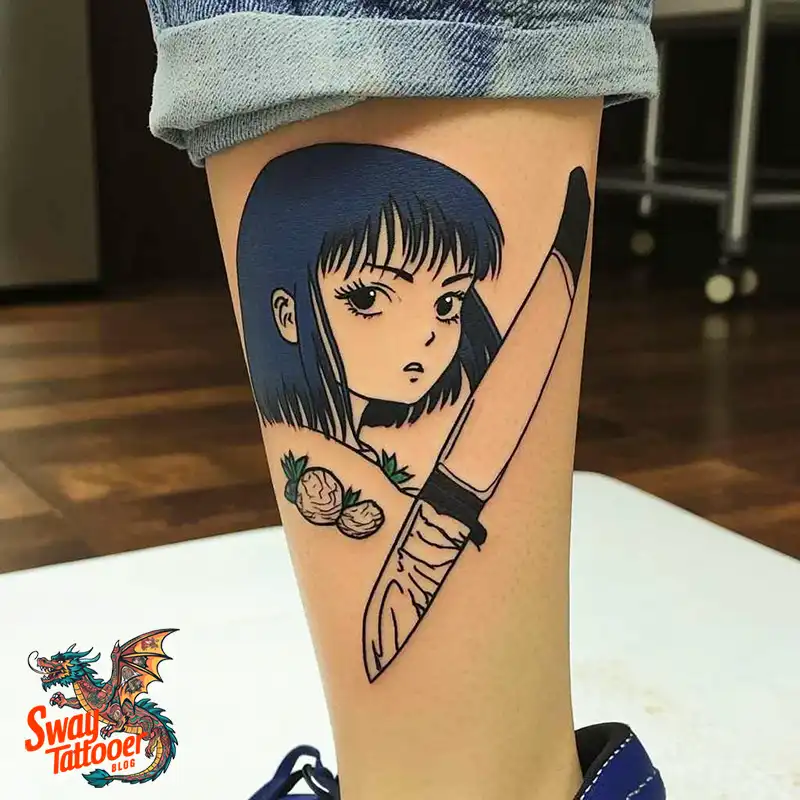
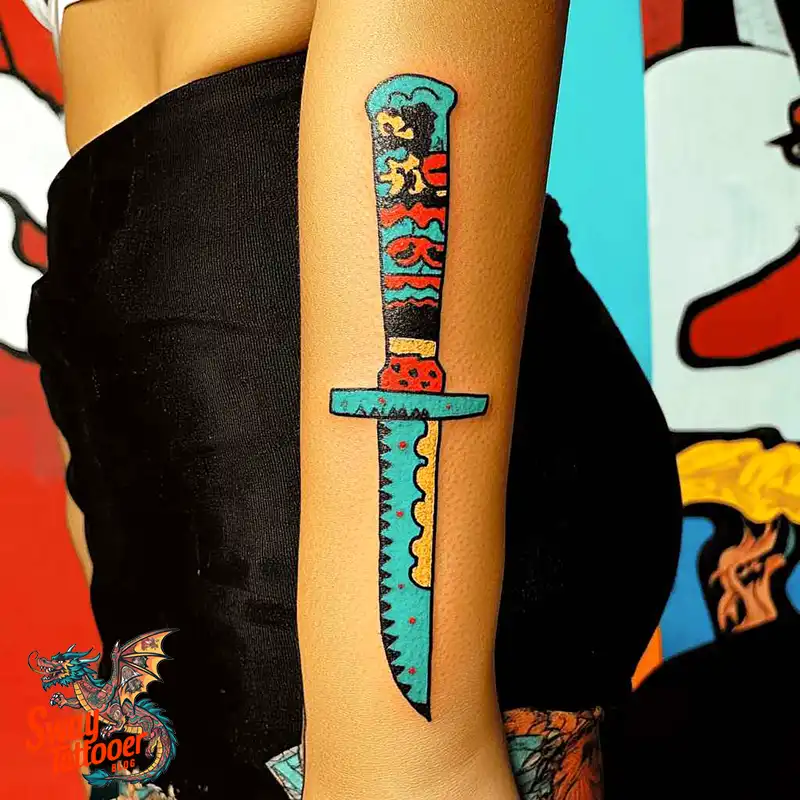
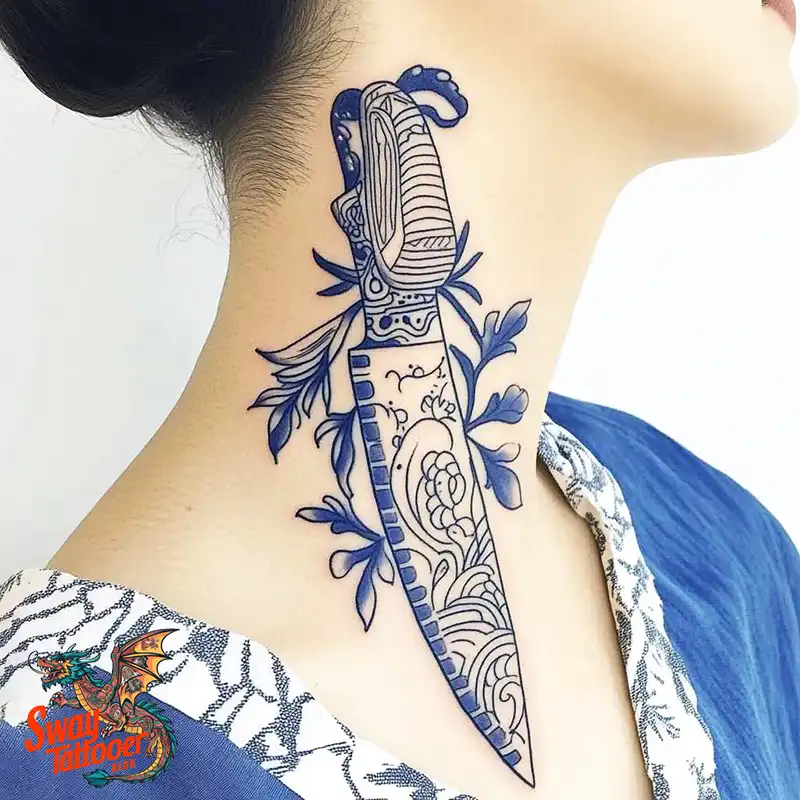
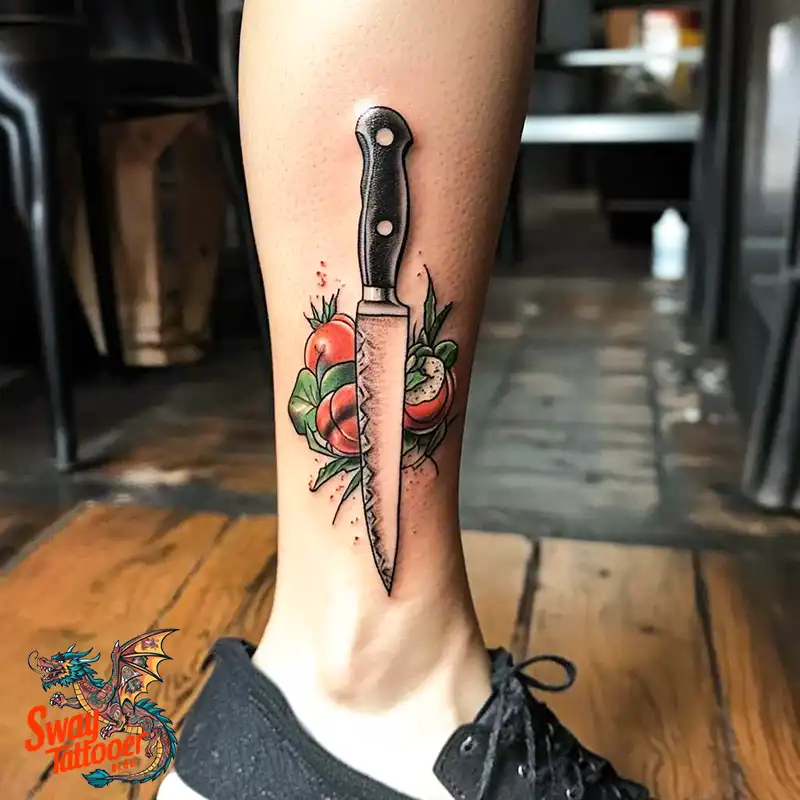
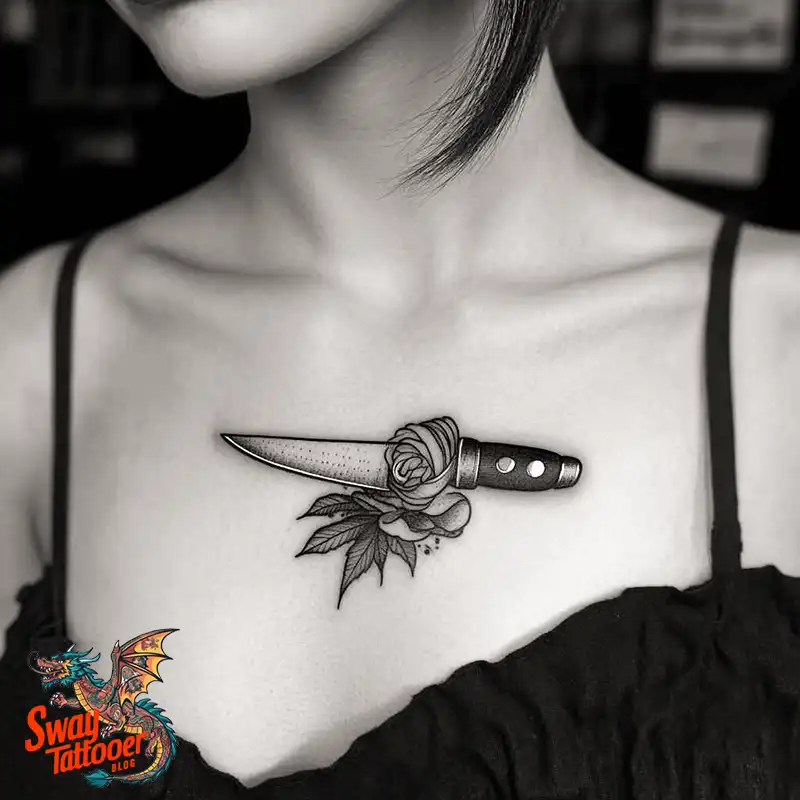
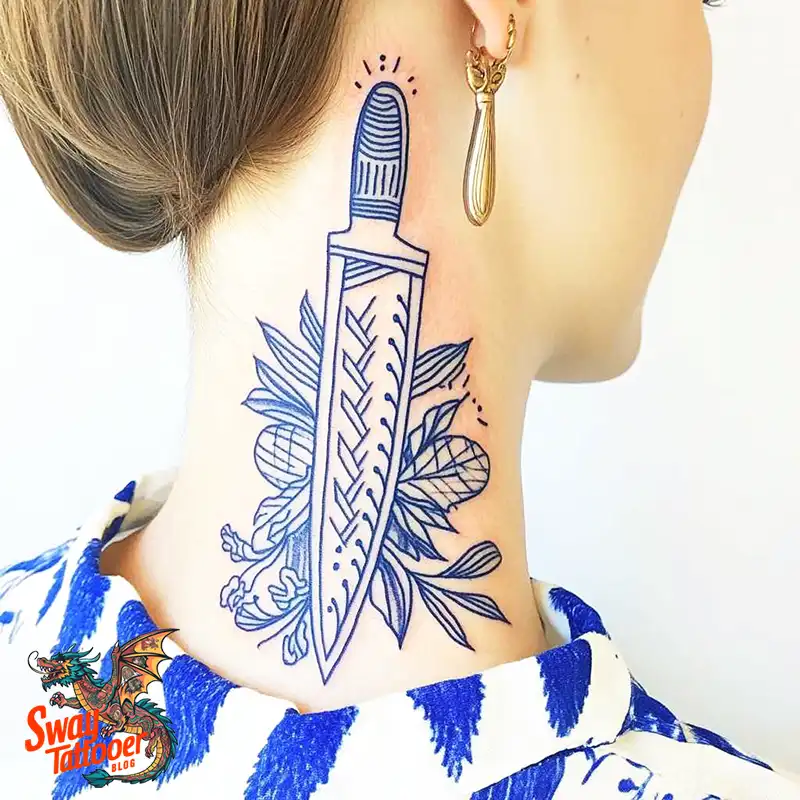
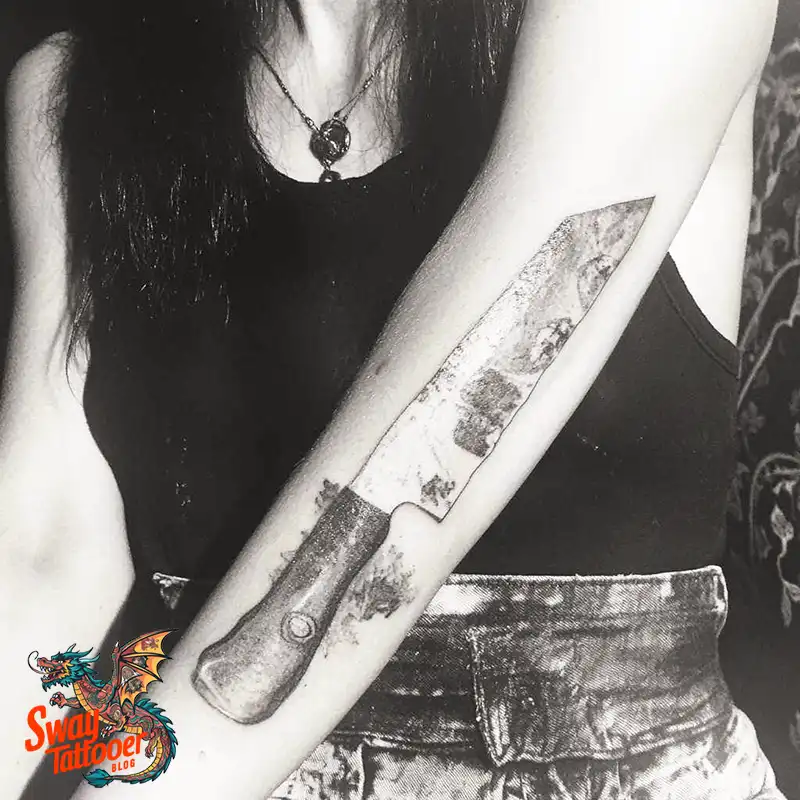
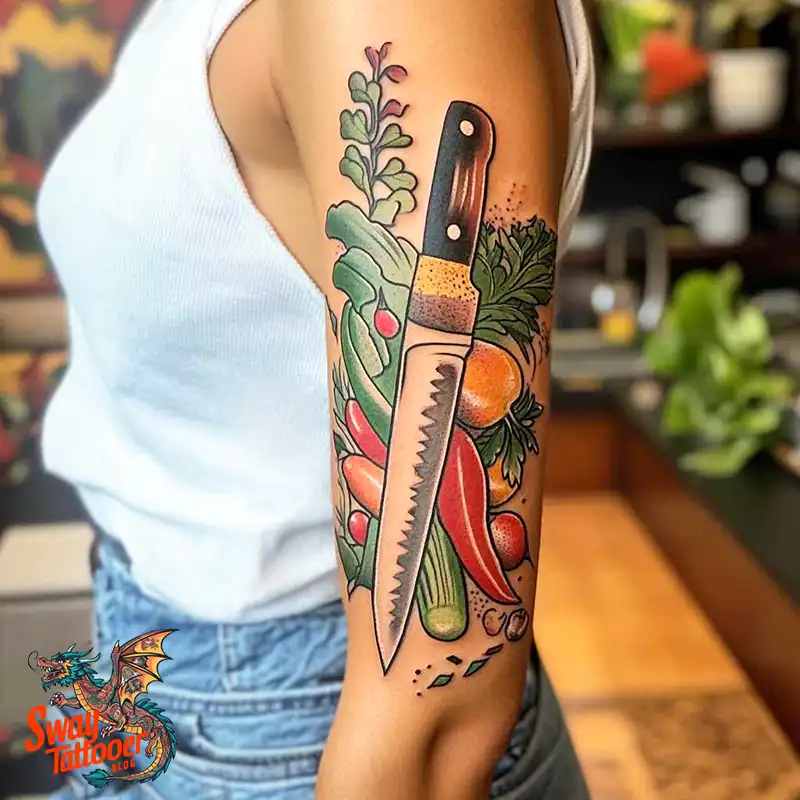
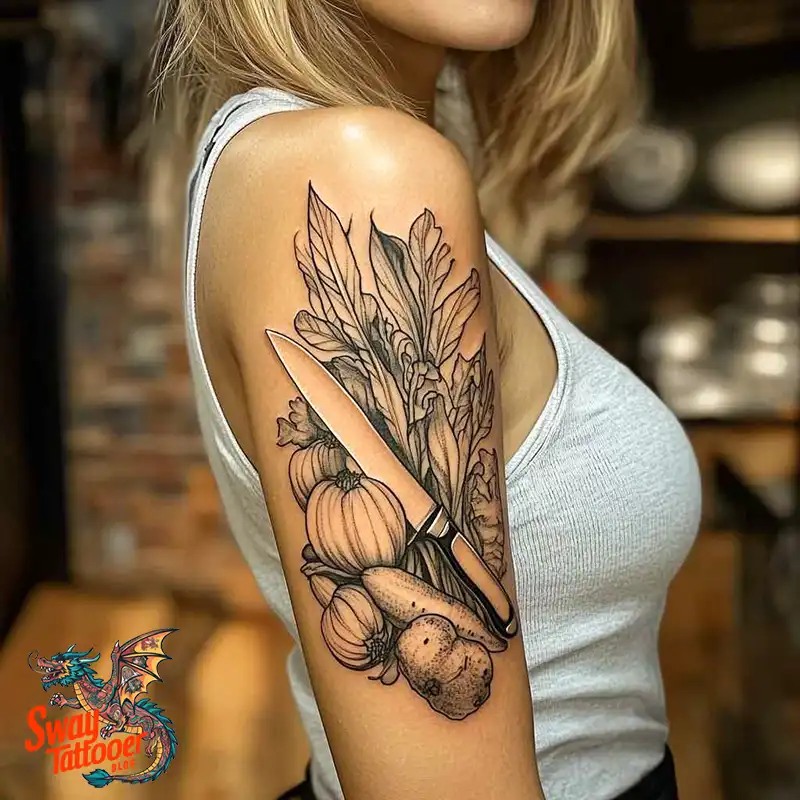
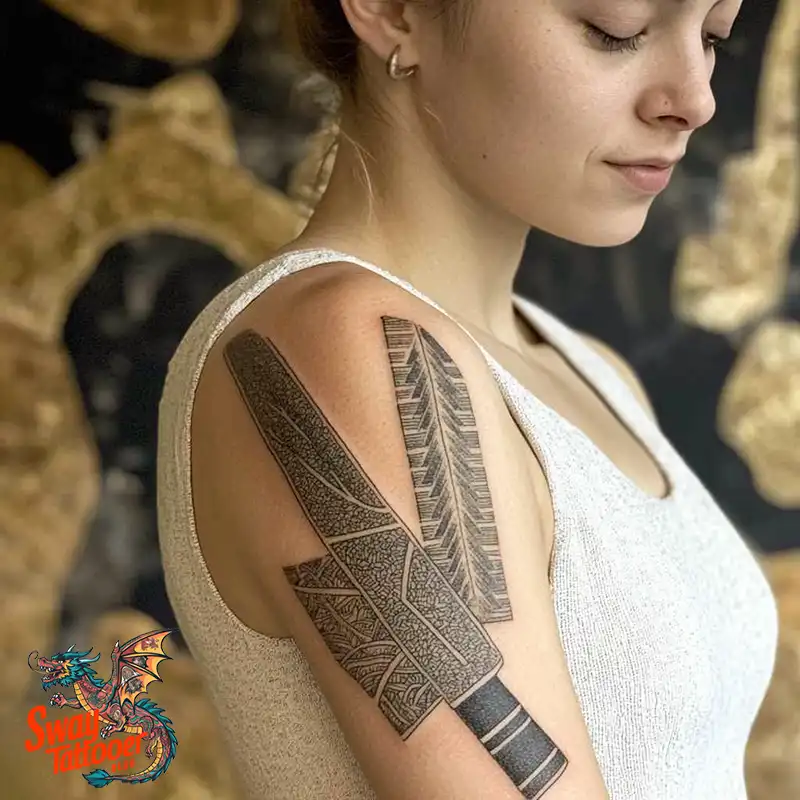
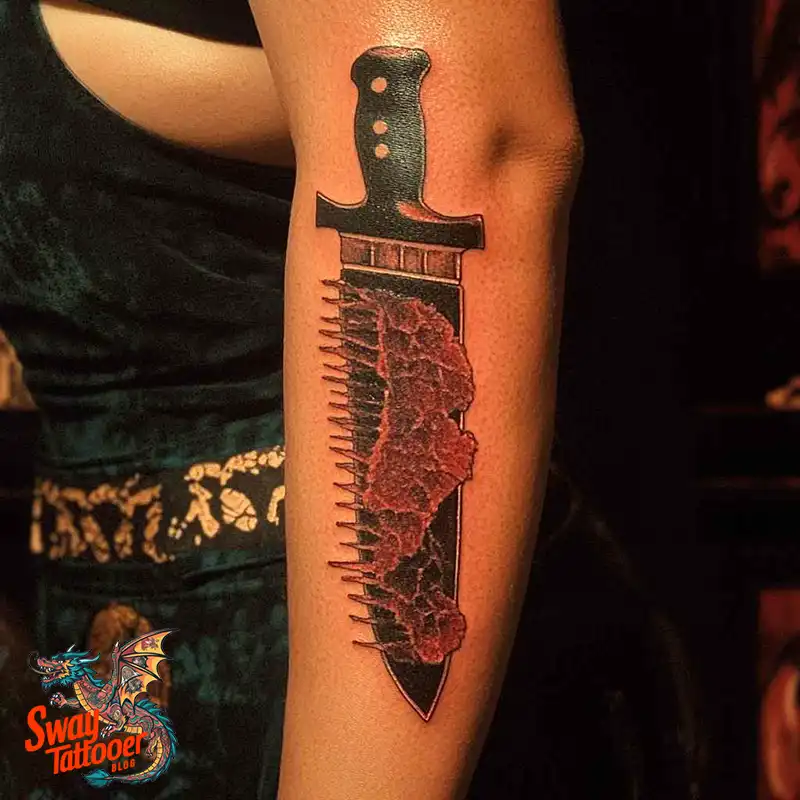
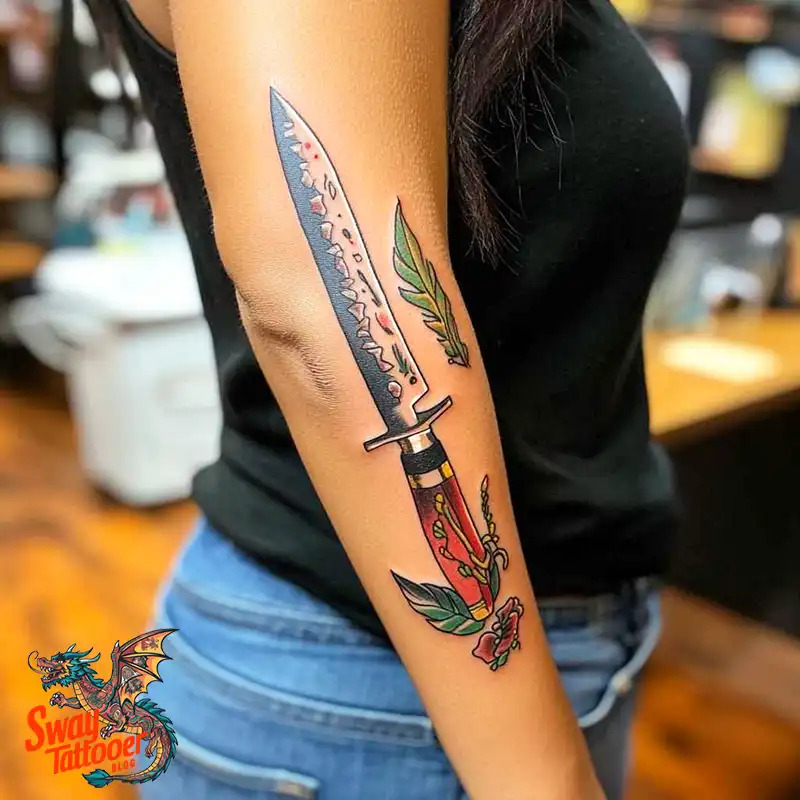
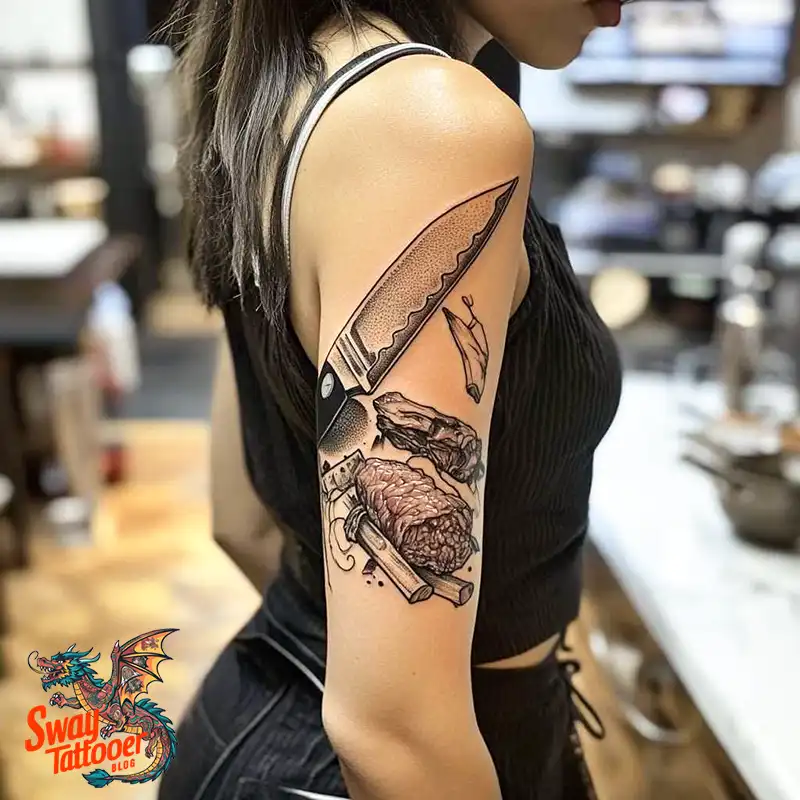
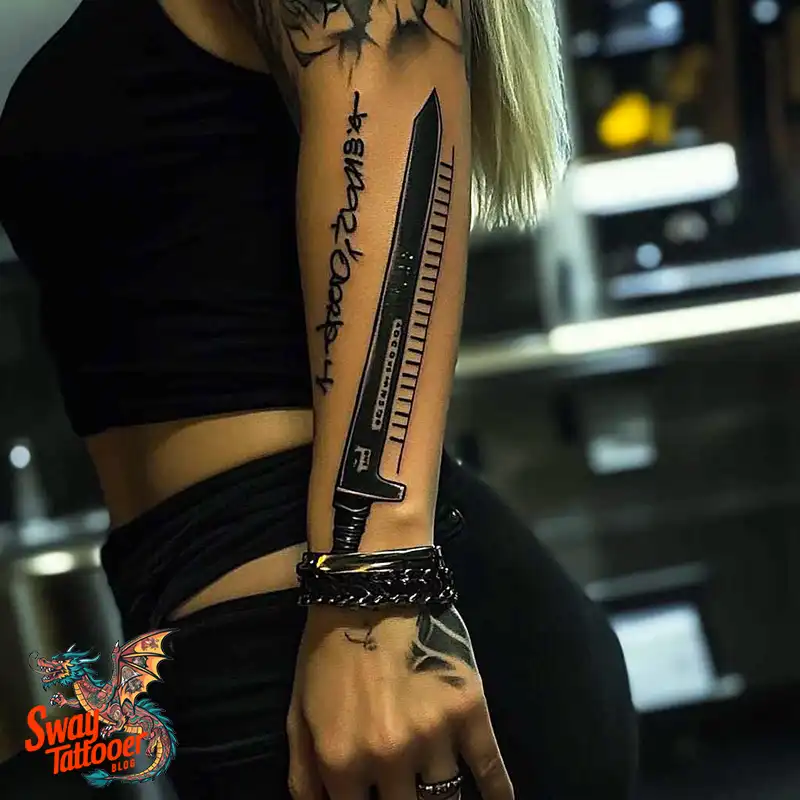
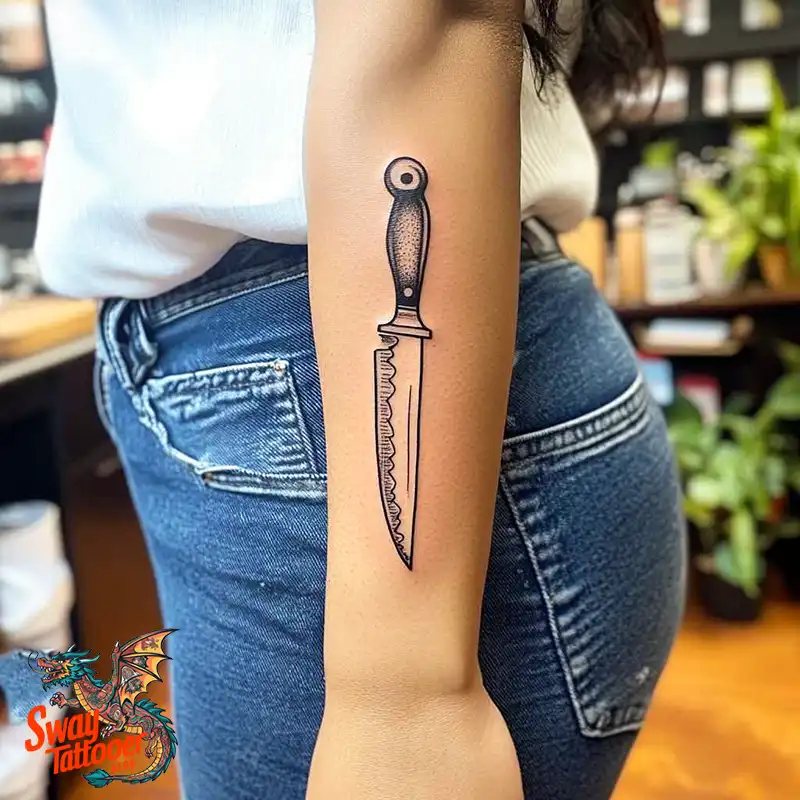
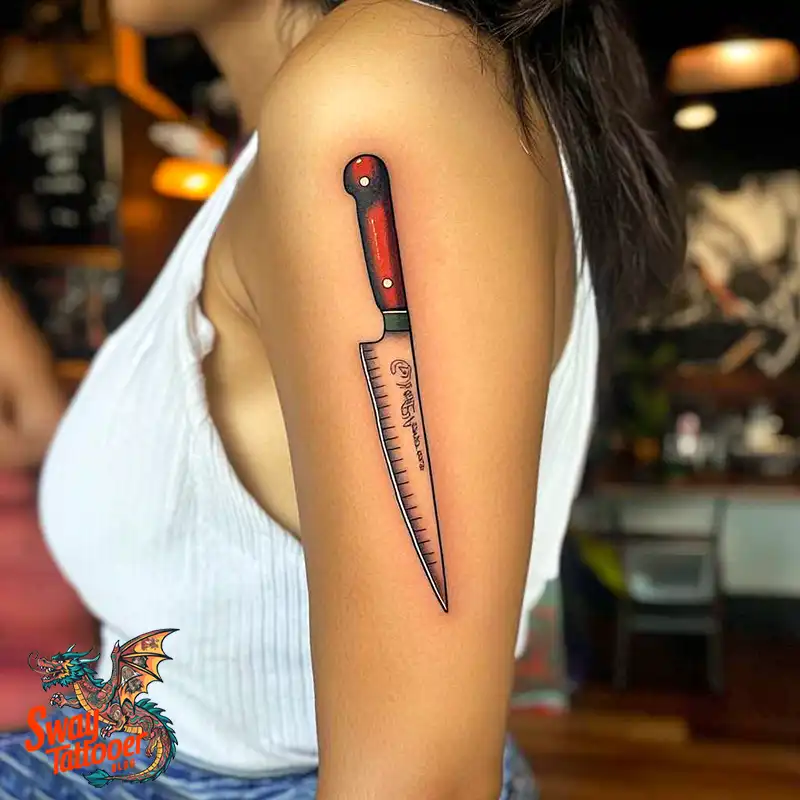
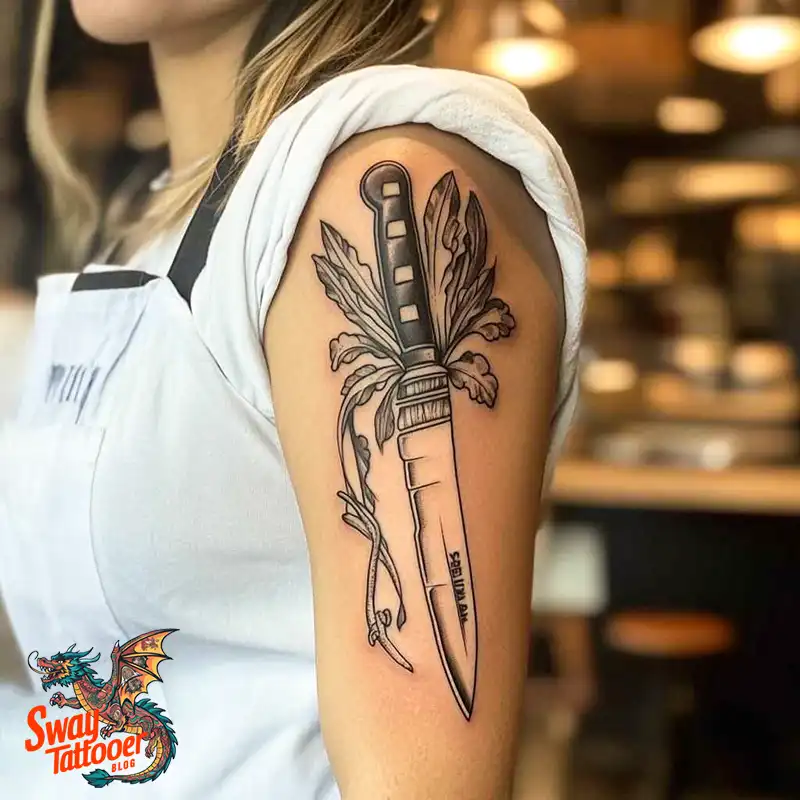
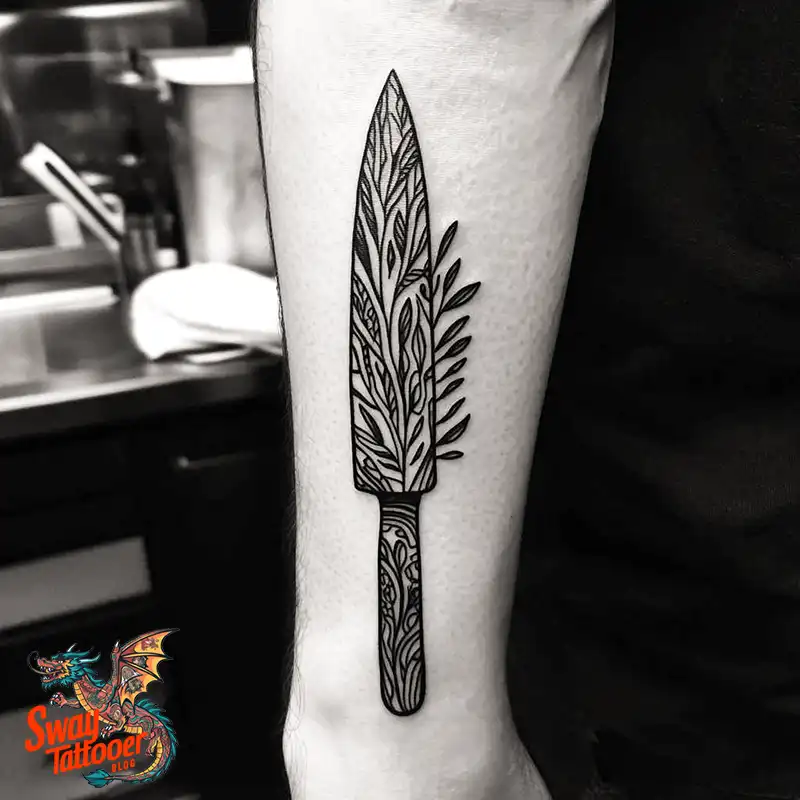
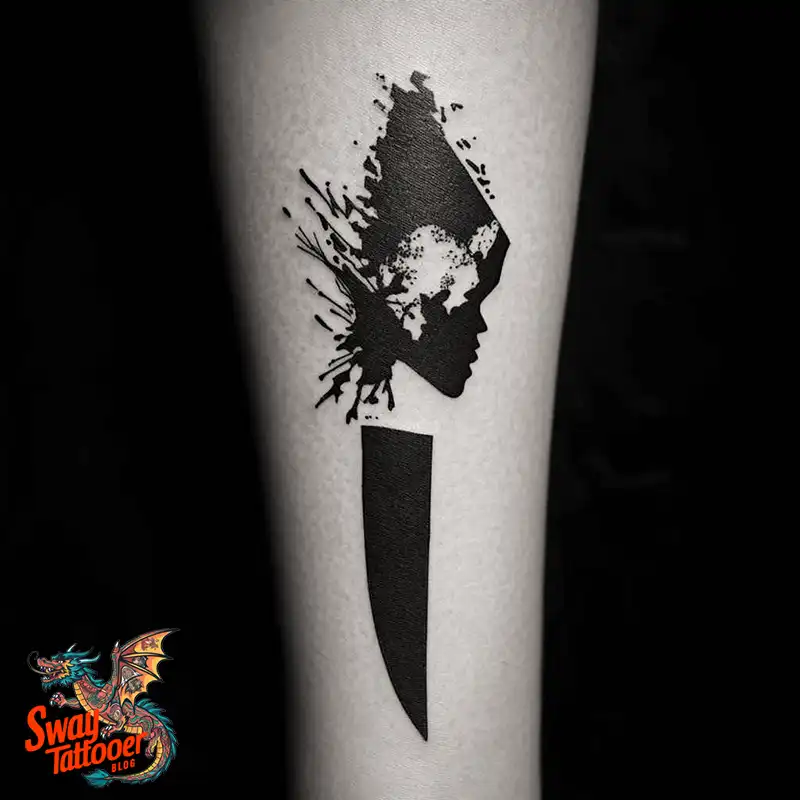
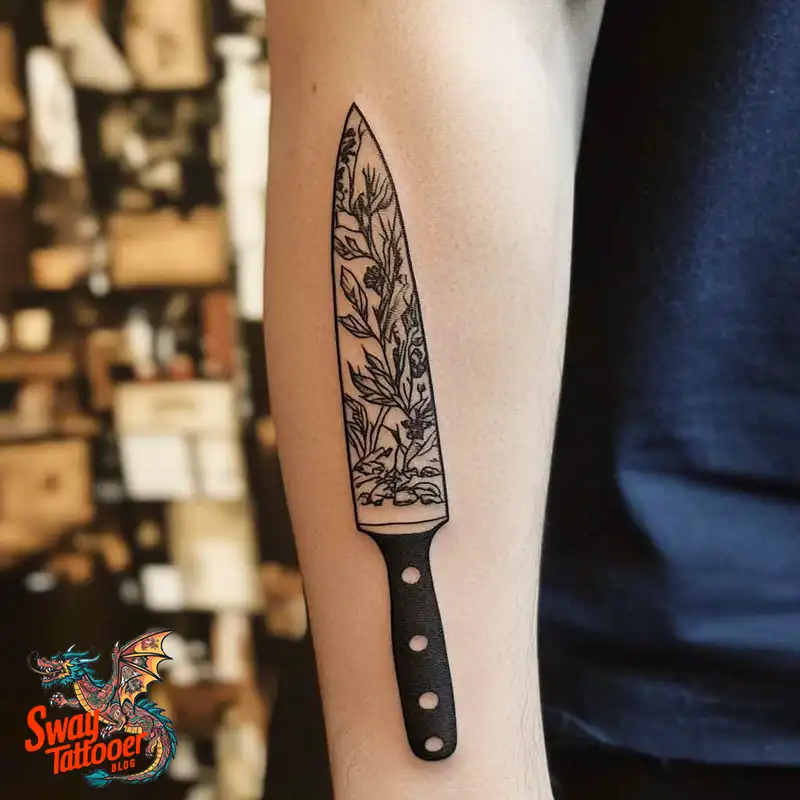
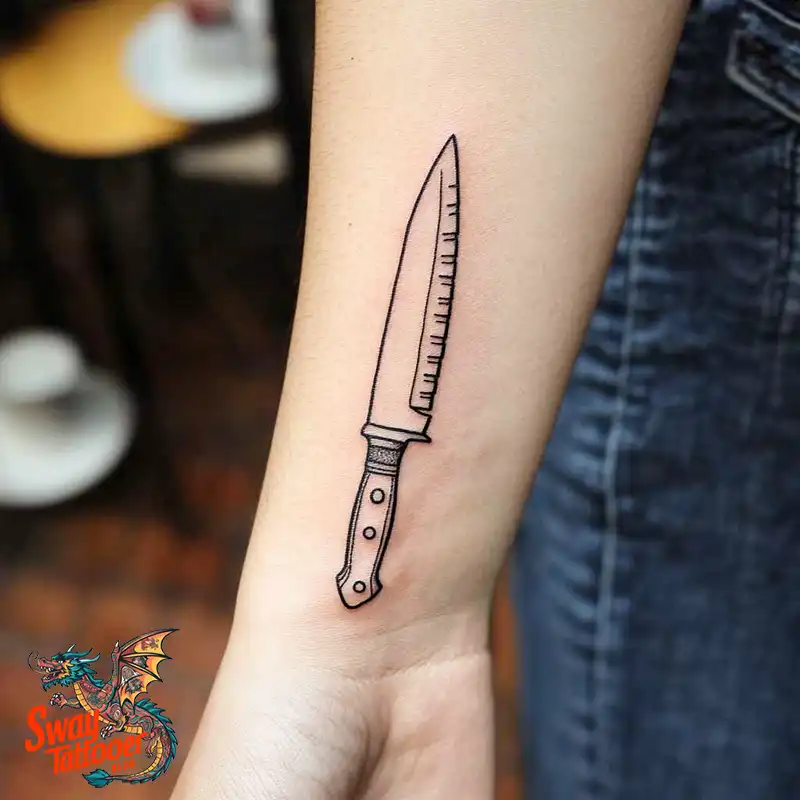
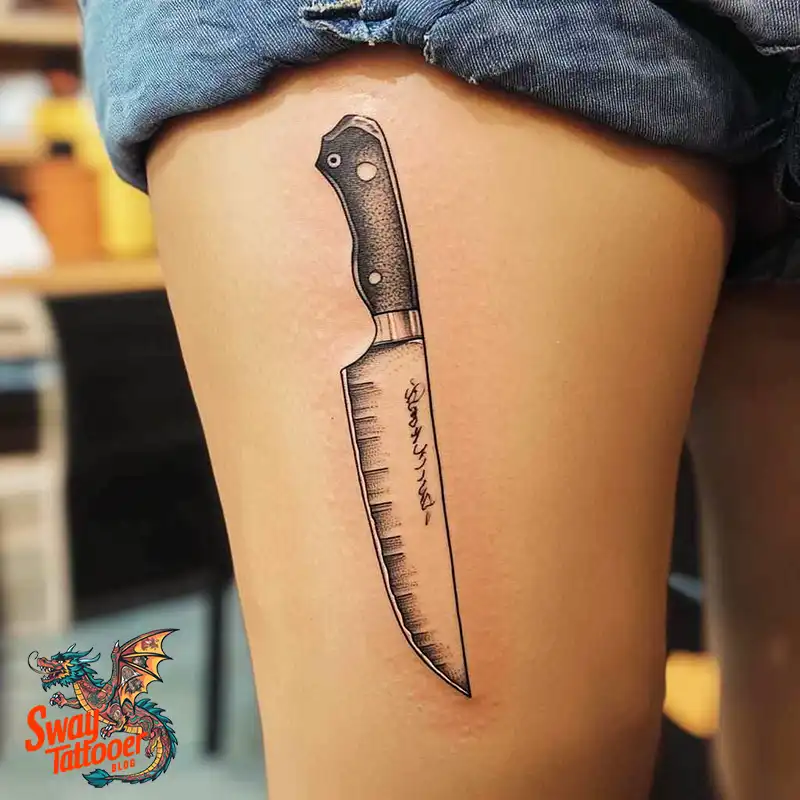
Historical Edge: Knives in Tattoo Culture
- 1950s–70s: The Sailor Jerry Era
Sailors got knife tattoos to show they could survive storms and long trips. These early designs inspired kitchen knife art later. - 2000s: Rise of Chef Culture
Shows like “Iron Chef” and chefs like Anthony Bourdain made cooking cool. More people got culinary tattoos to honor their favorite chefs. - Modern Revival
Today, even female chefs get floral-wrapped knives or pastel blades. The chef knife tattoo has become a symbol for anyone who loves to cook.
Aftercare: Keeping Your Blade Sharp
- Weeks 1–2: Healing Stage:
- Wash your tattoo with mild soap and warm water.
- Pat it dry with a clean towel.
- Apply a thin layer of fragrance-free ointment.
- Avoid soaking in pools or hot tubs.
- Sun Protection:
- After it heals, always use SPF 50+ sunscreen.
- Sun can fade the gray steel and dull the red “blood” details.
- Hand Tattoo Rules:
- If your knife is on your hand or forearm, wash gently after cooking.
- Grease and oil can trap bacteria.
- Moisturize three times a day to keep skin soft.
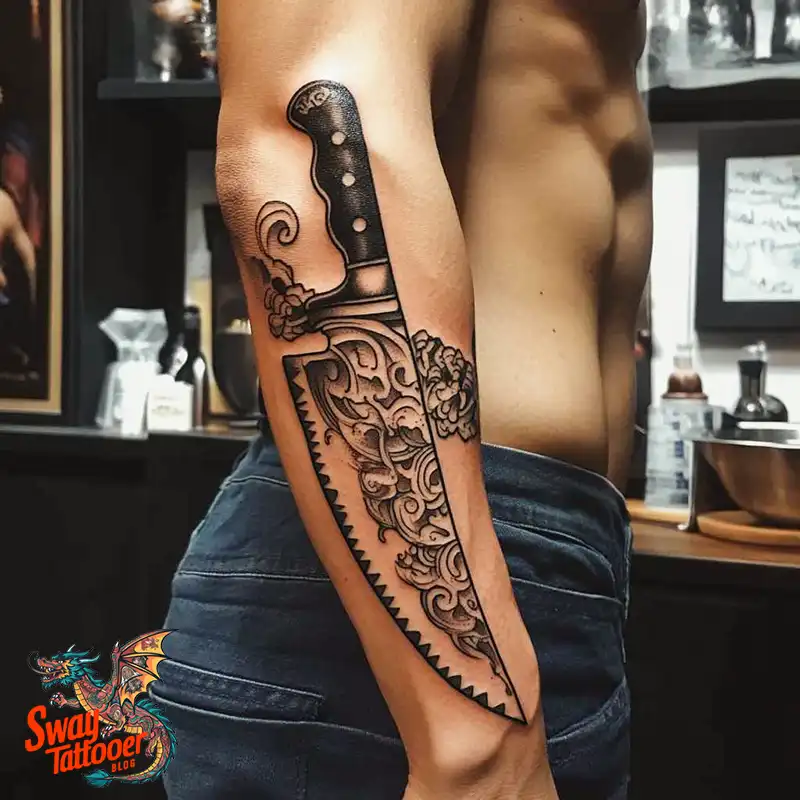
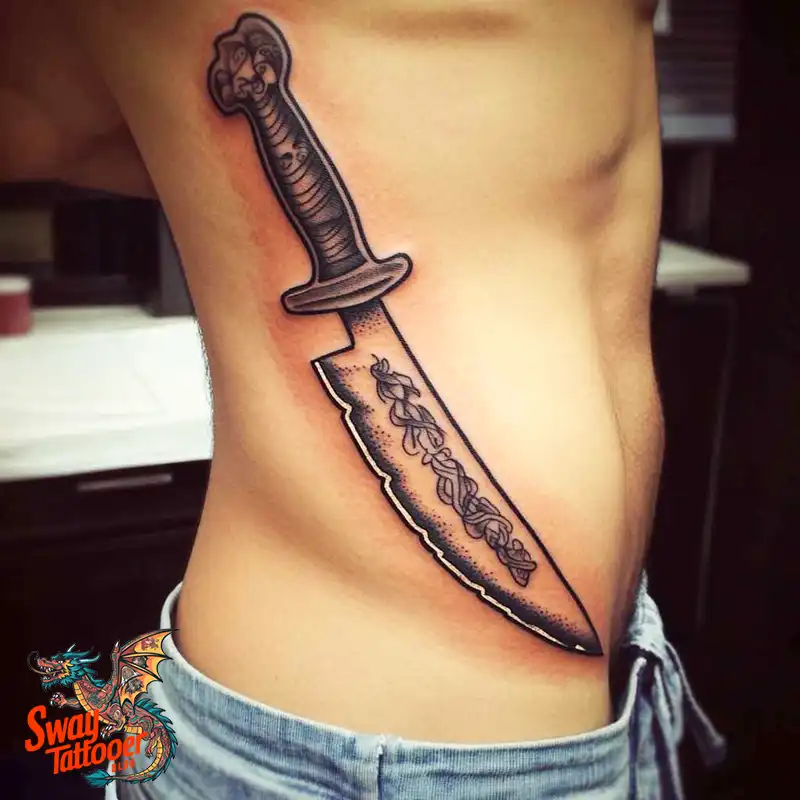
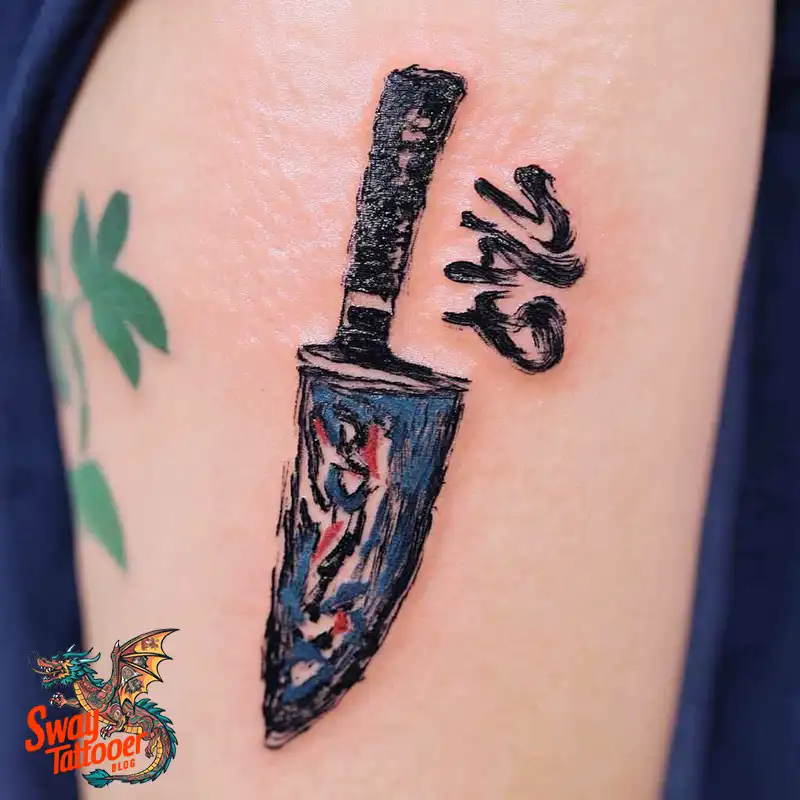
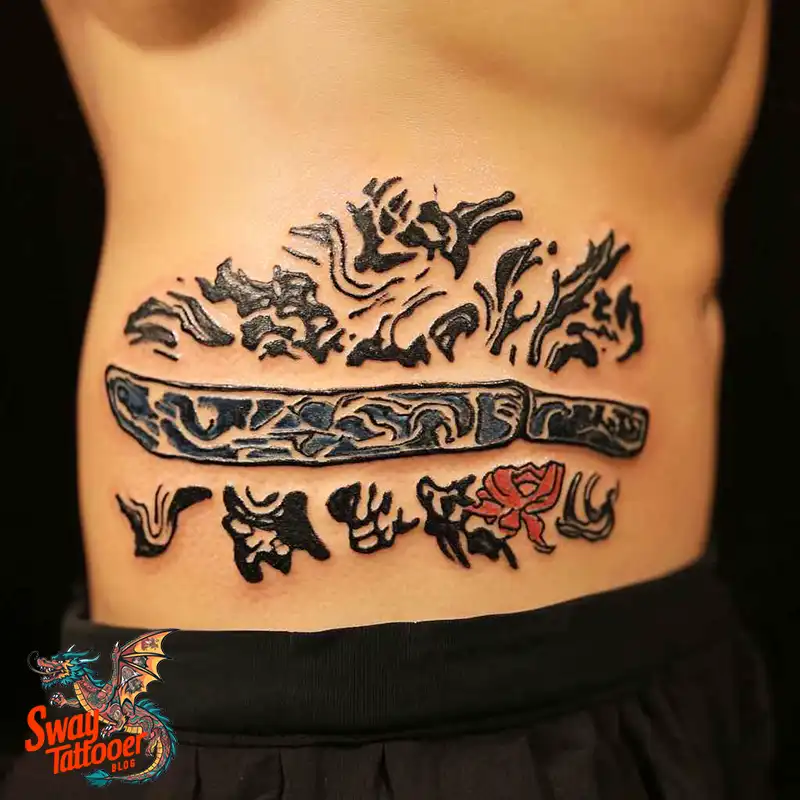
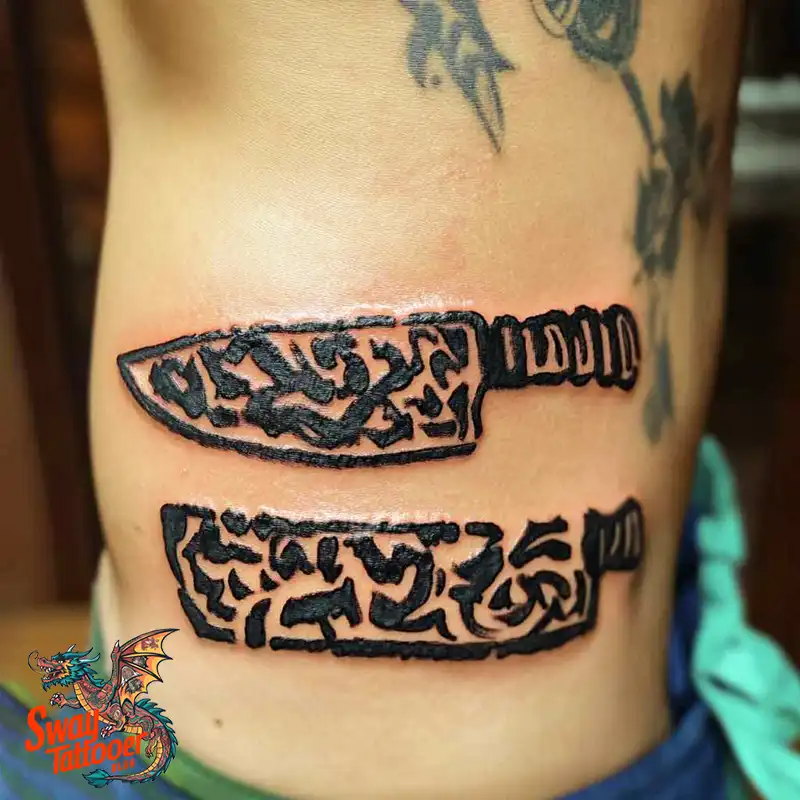
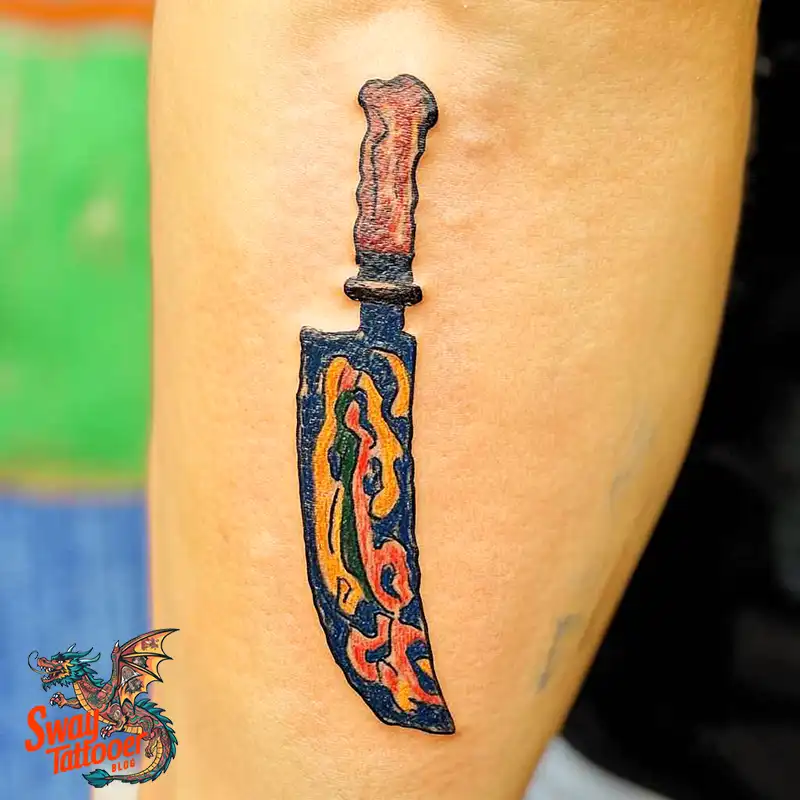
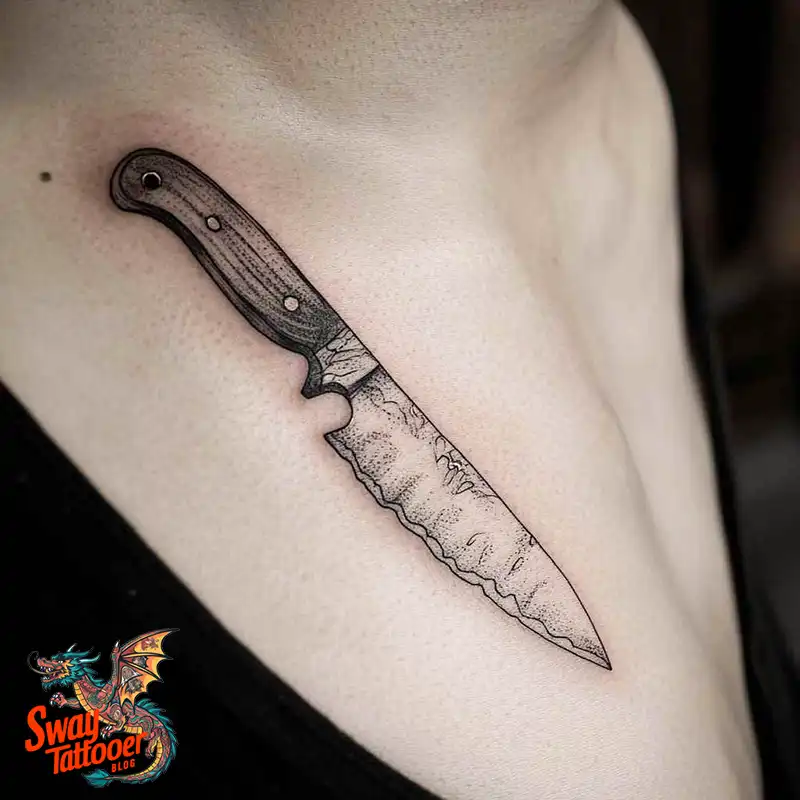
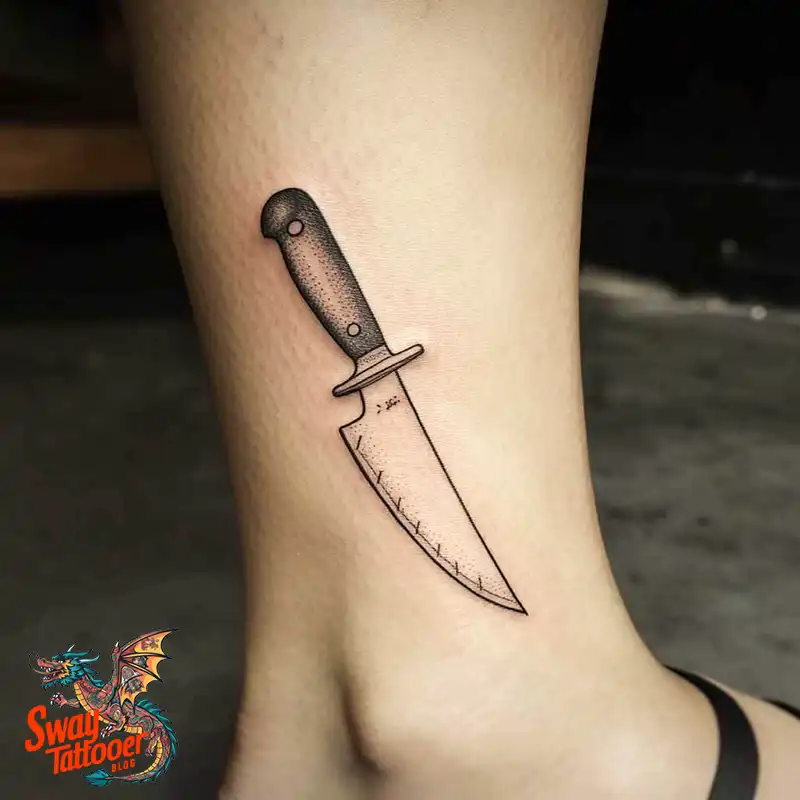
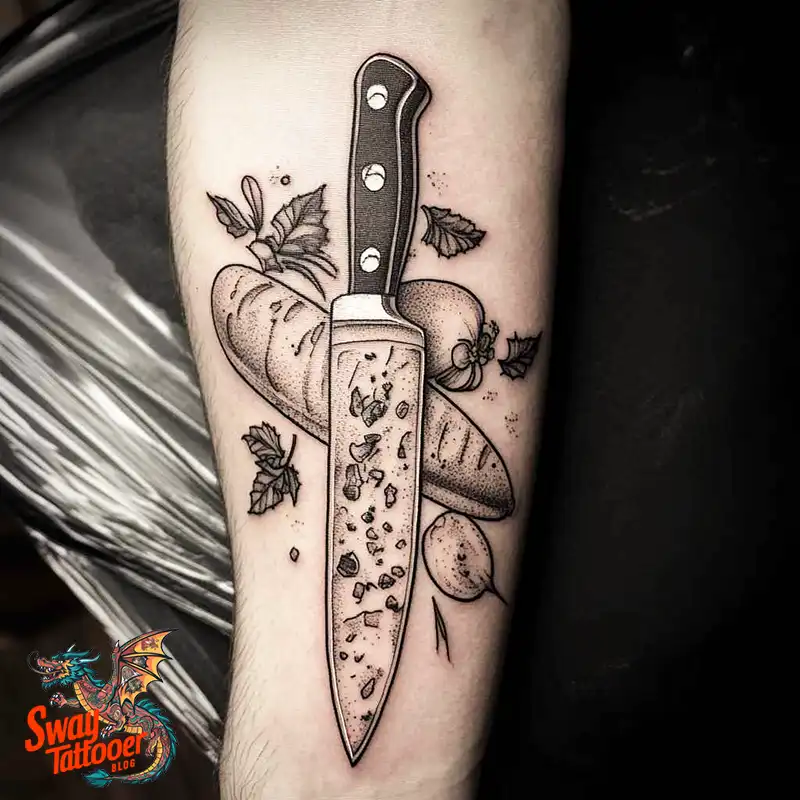
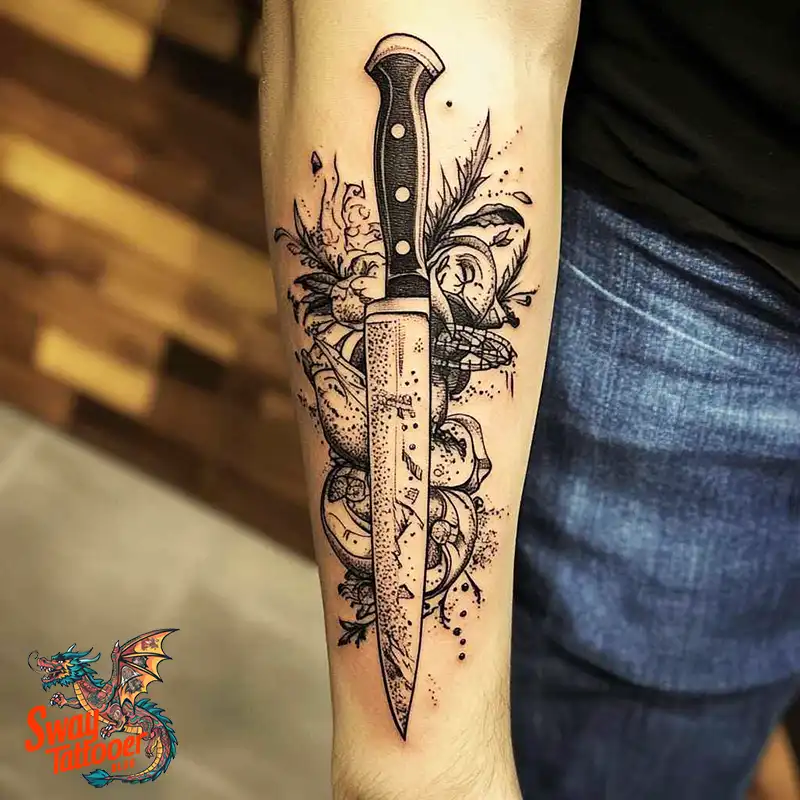
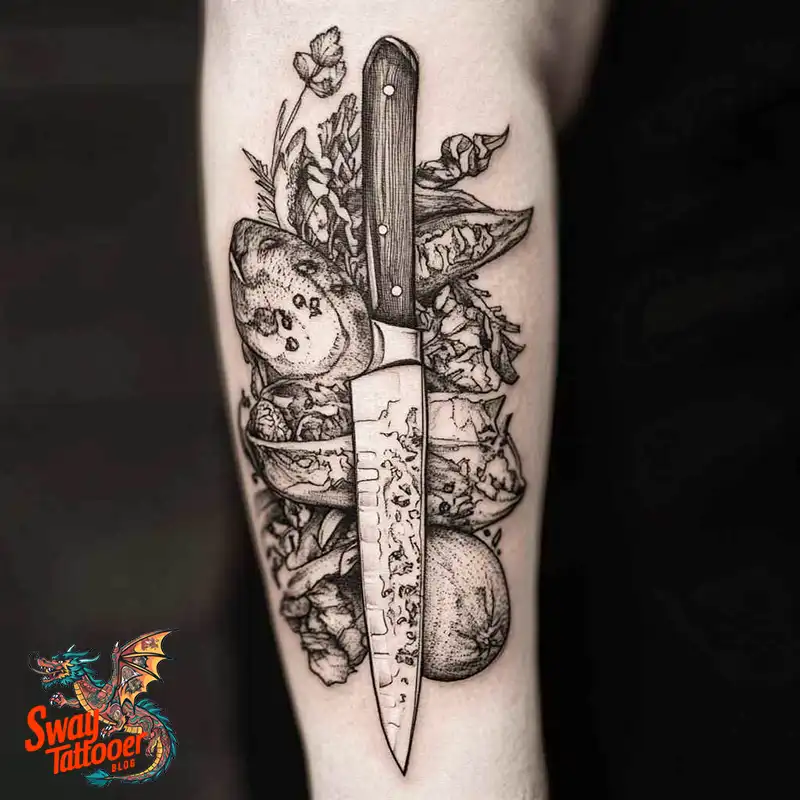
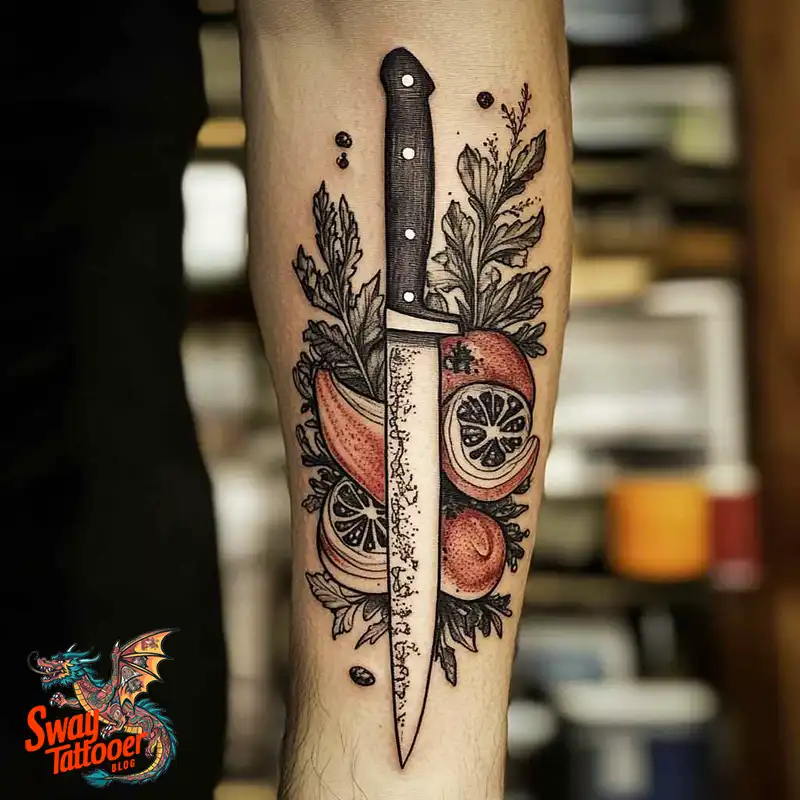
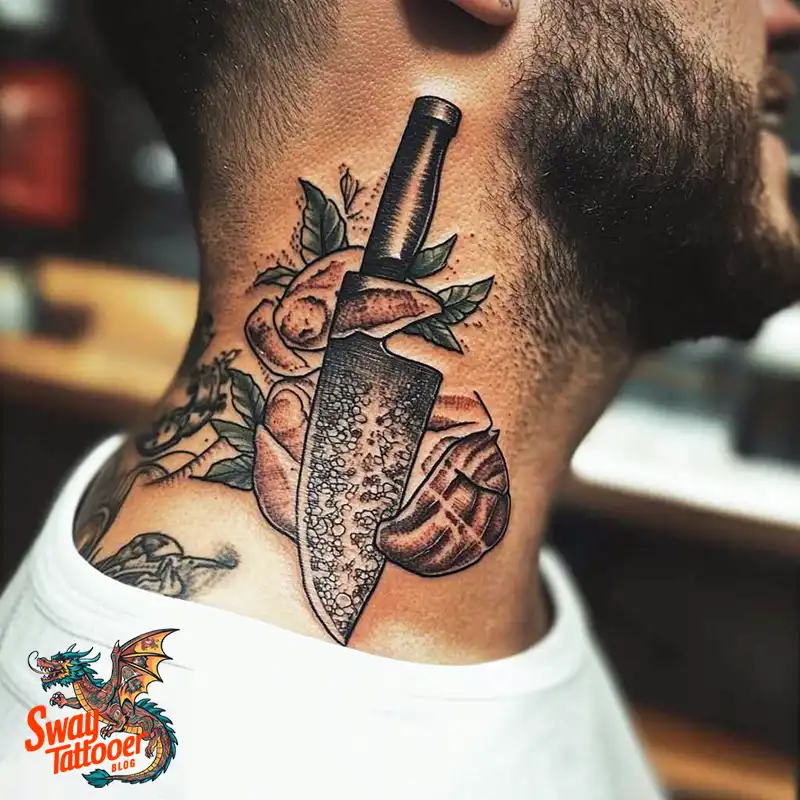
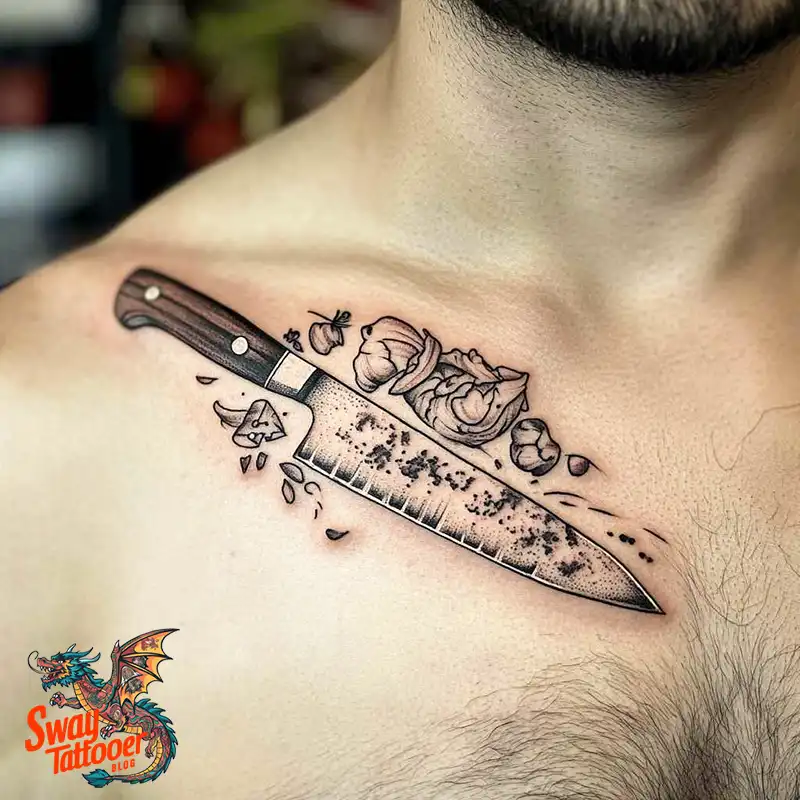
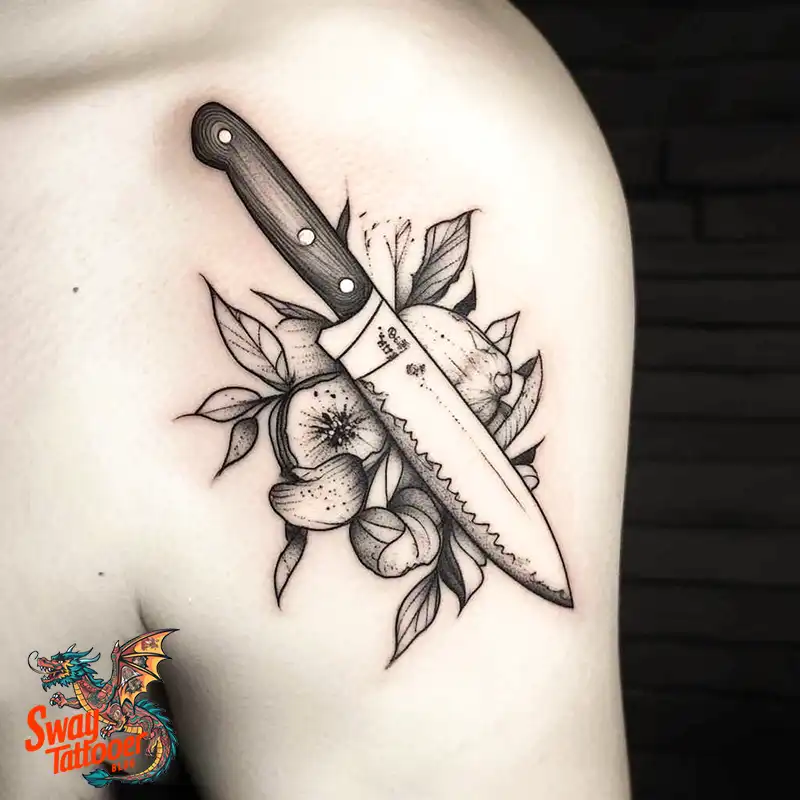
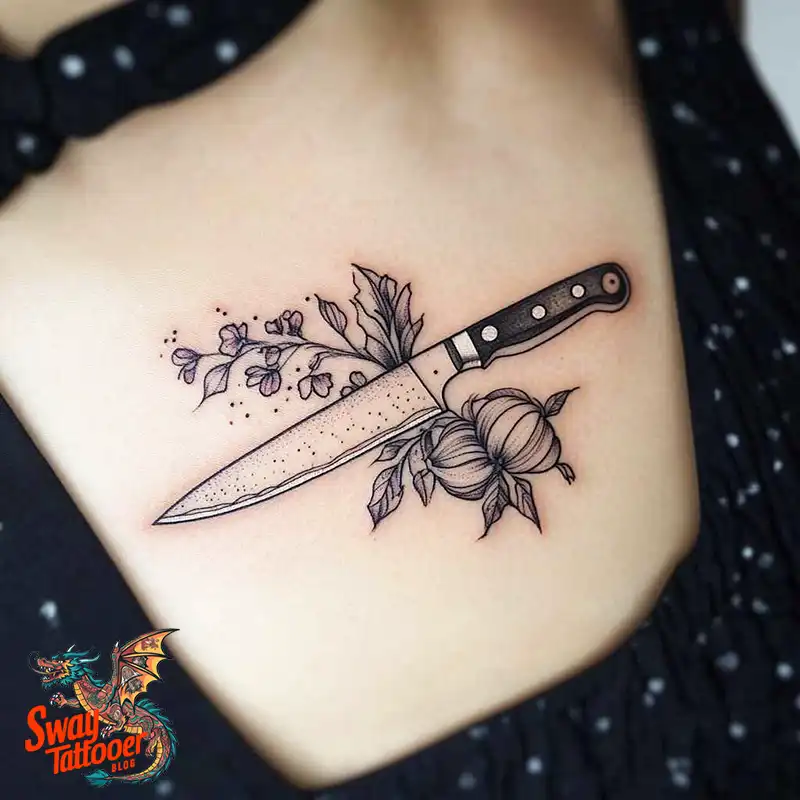
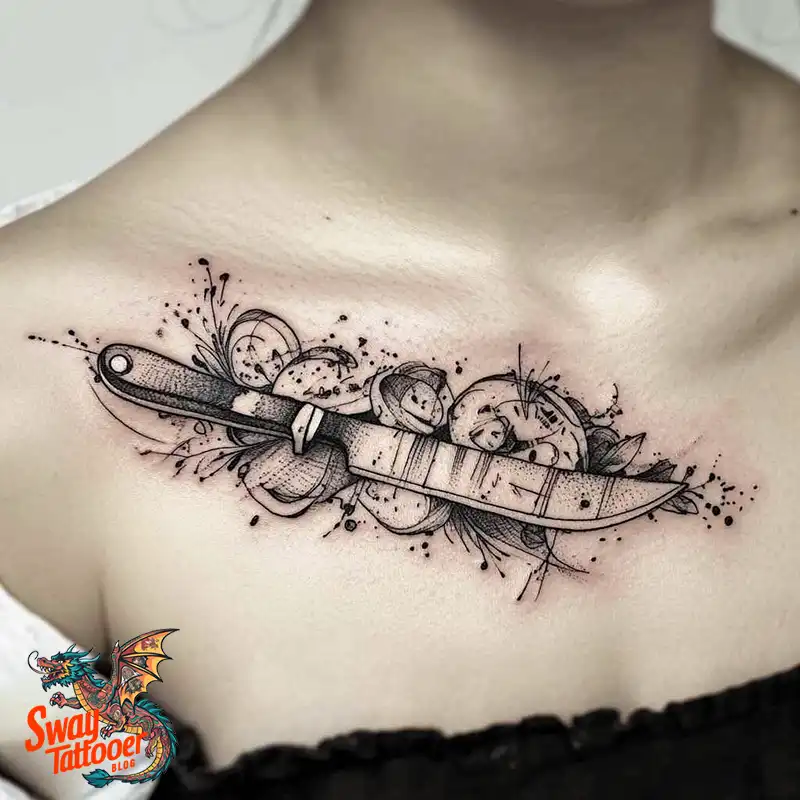
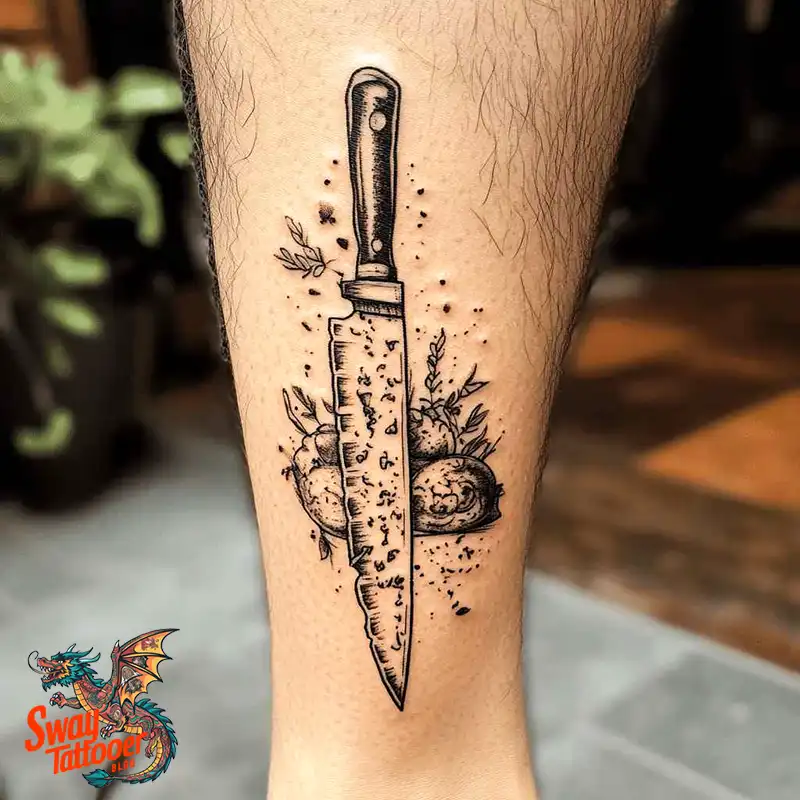
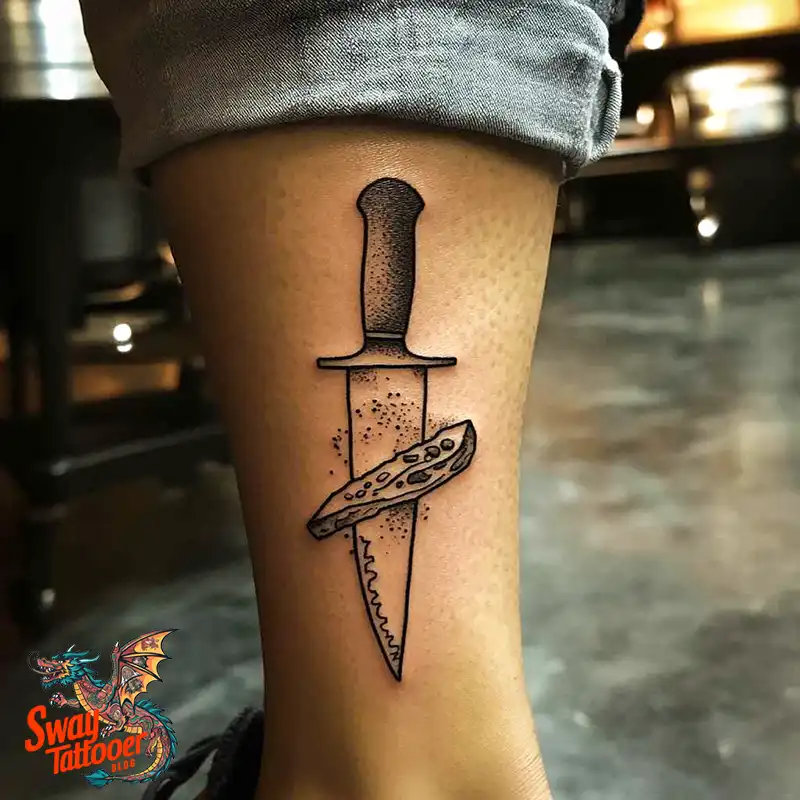
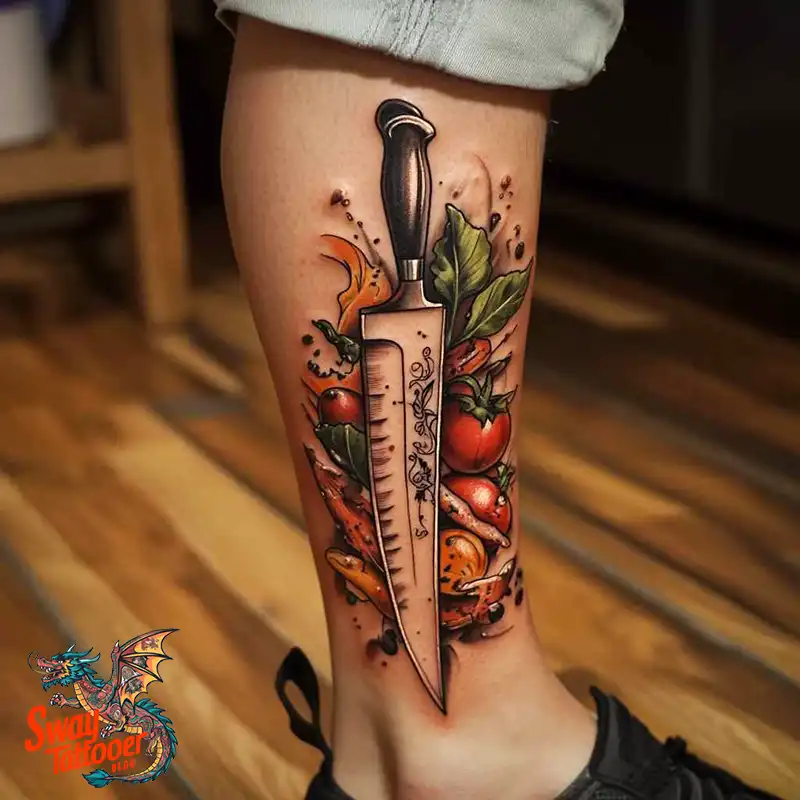
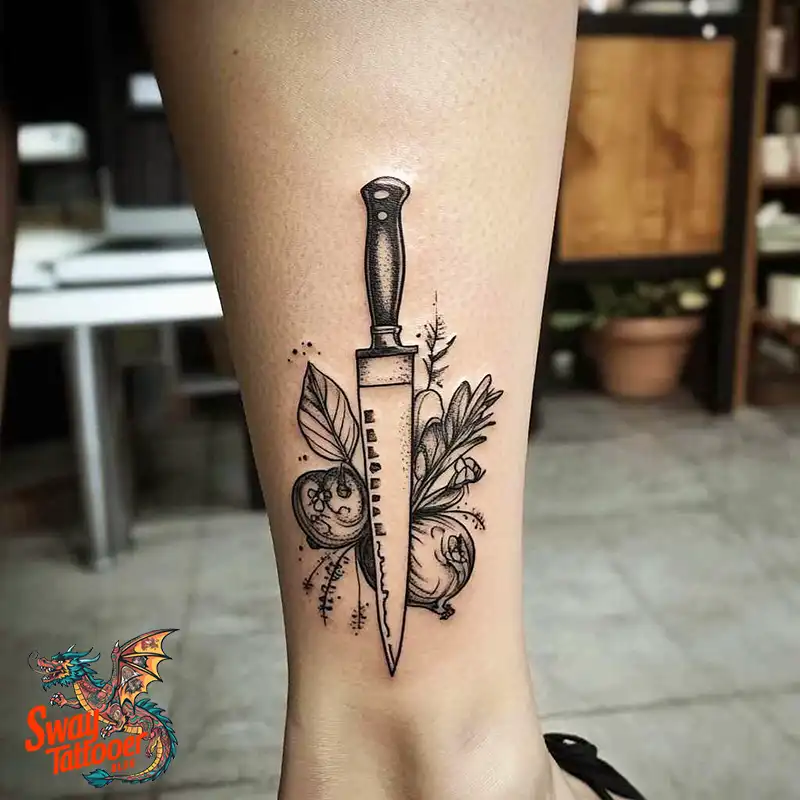
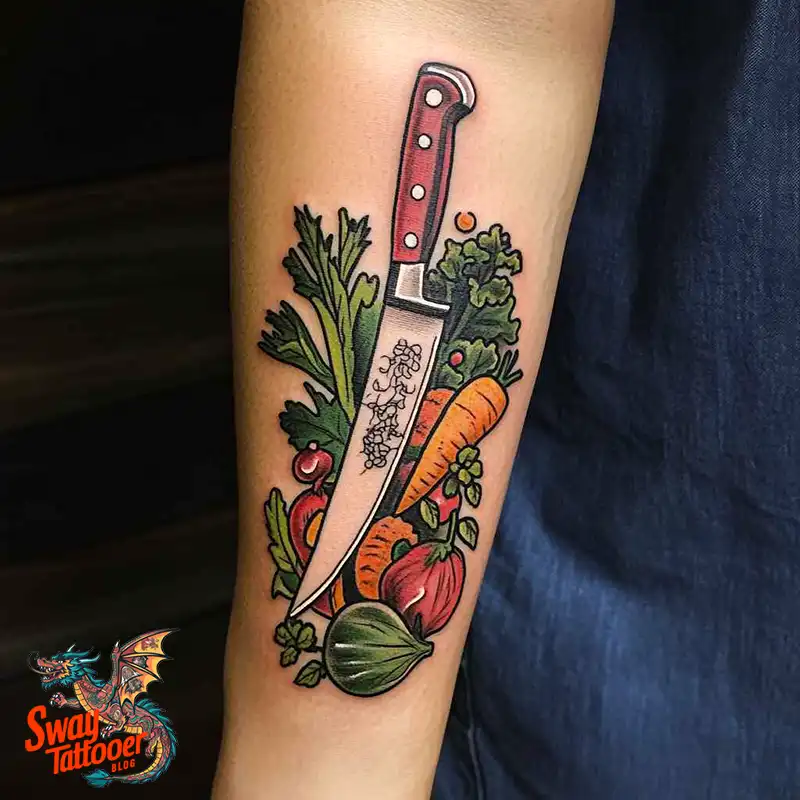
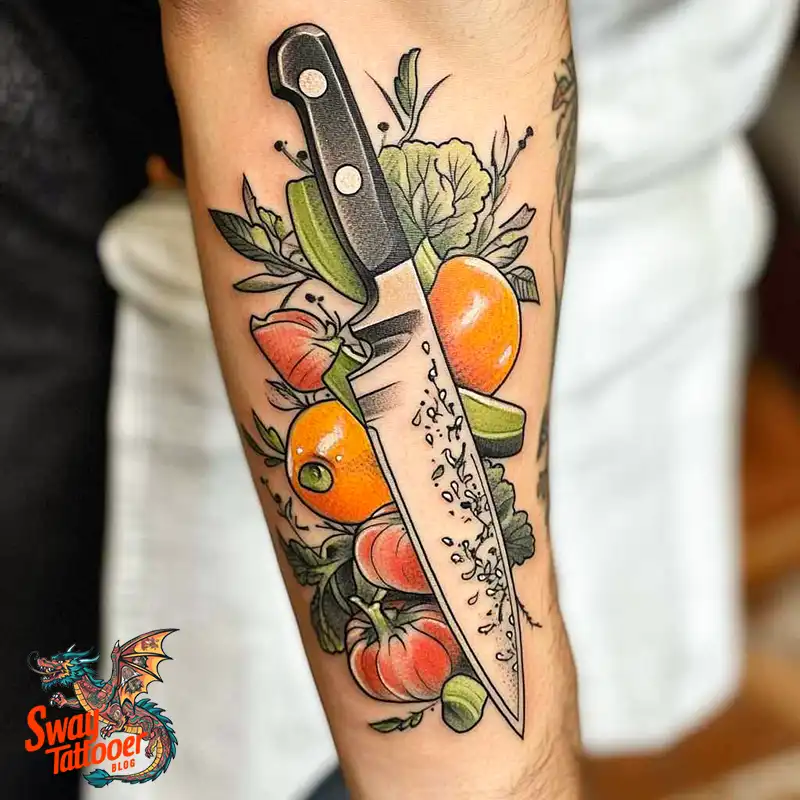
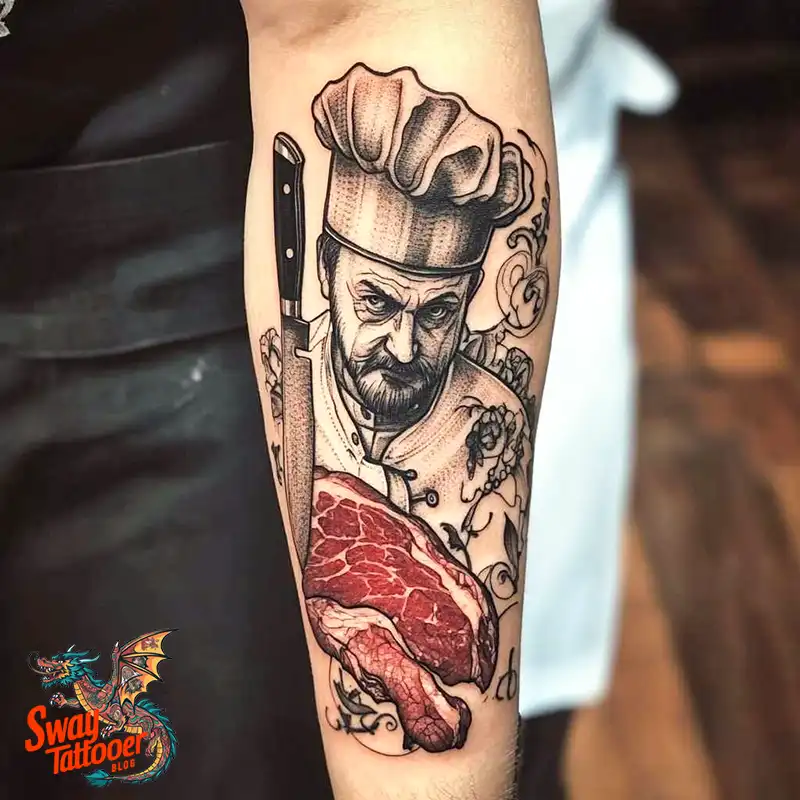
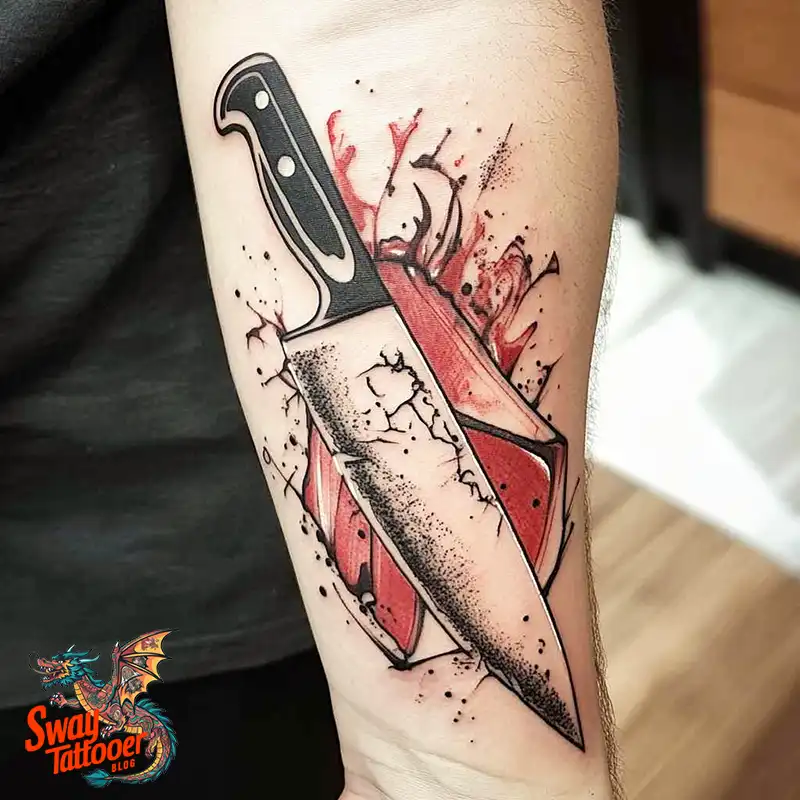
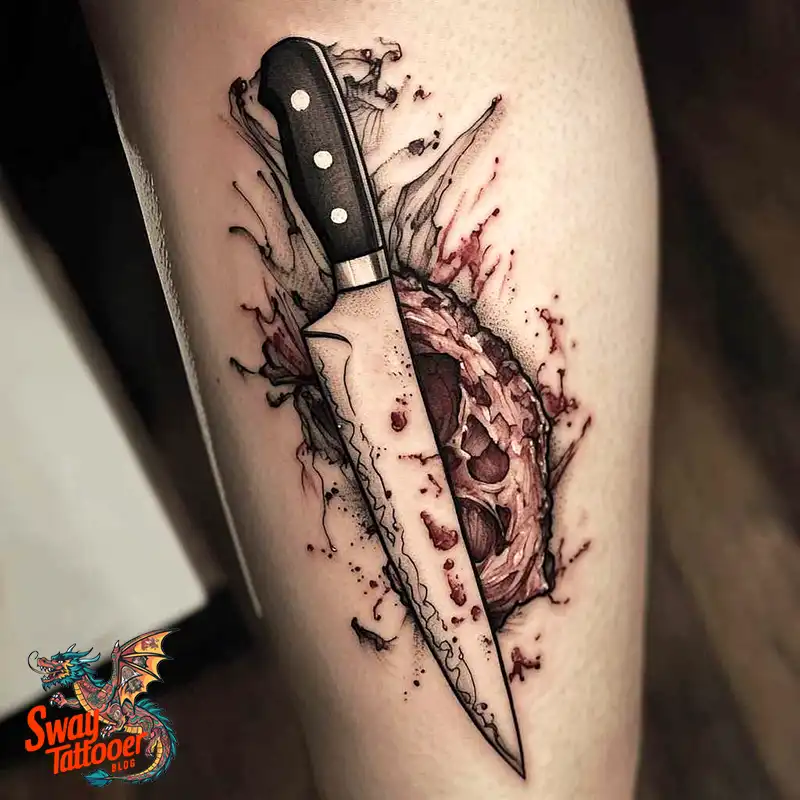
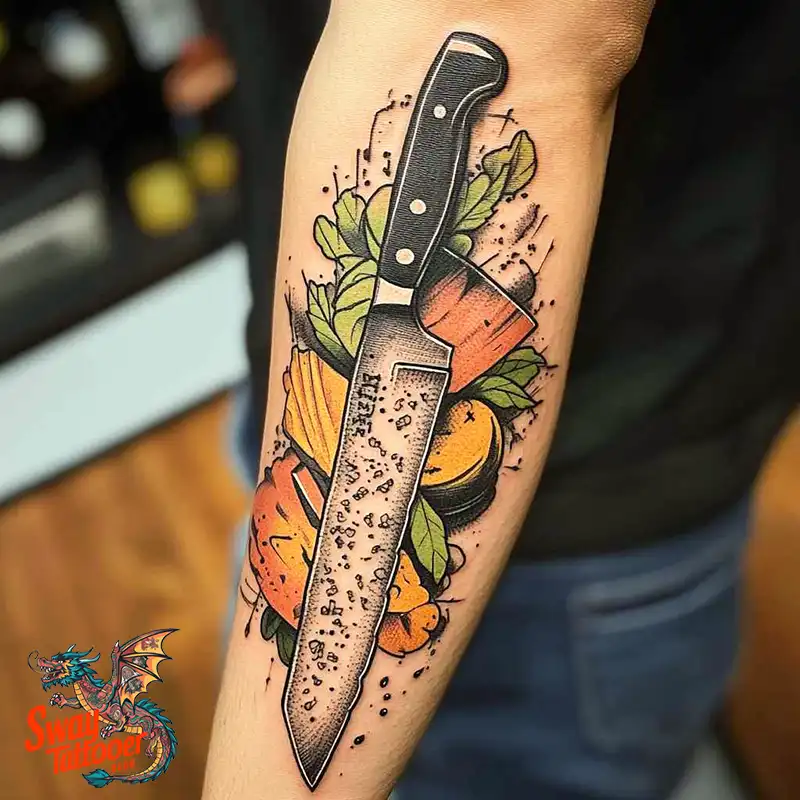
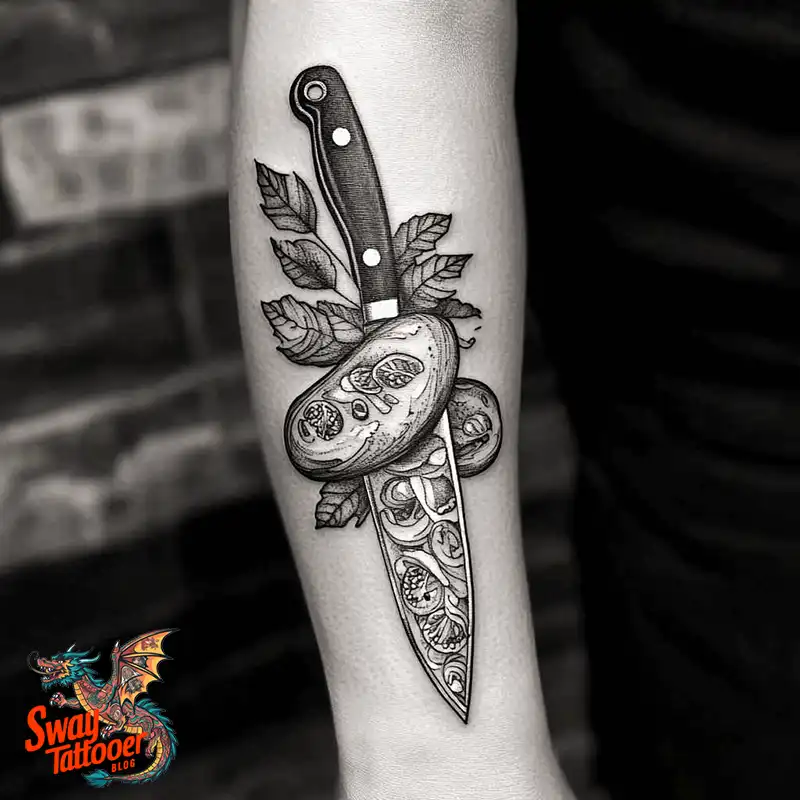
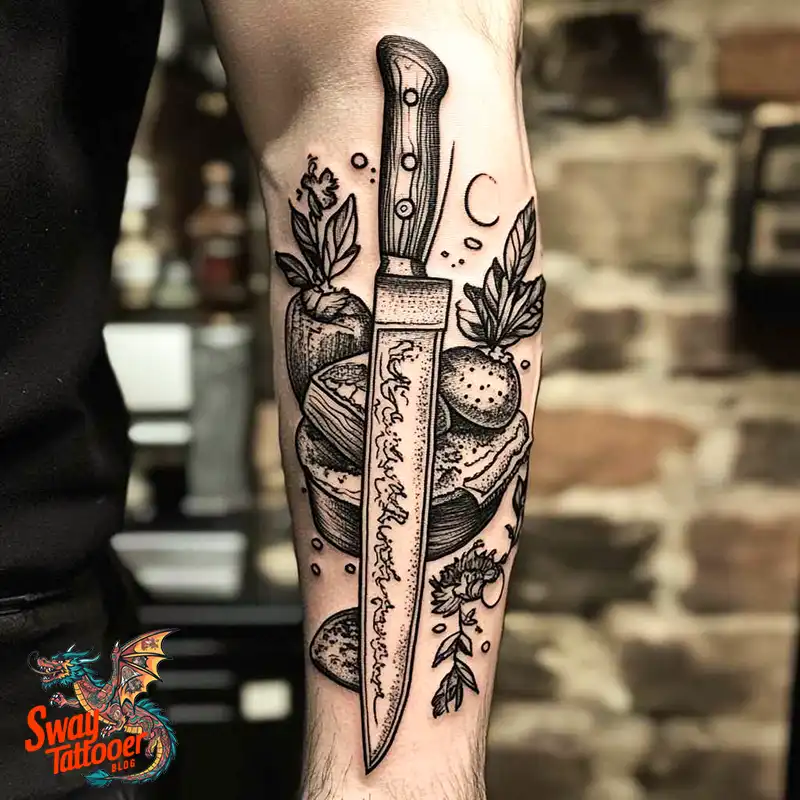
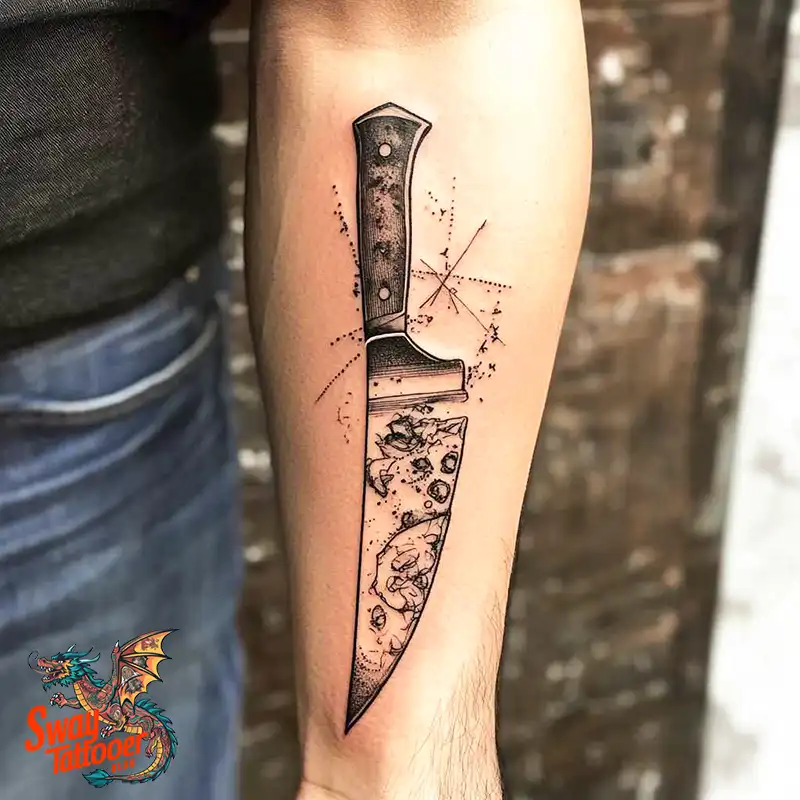
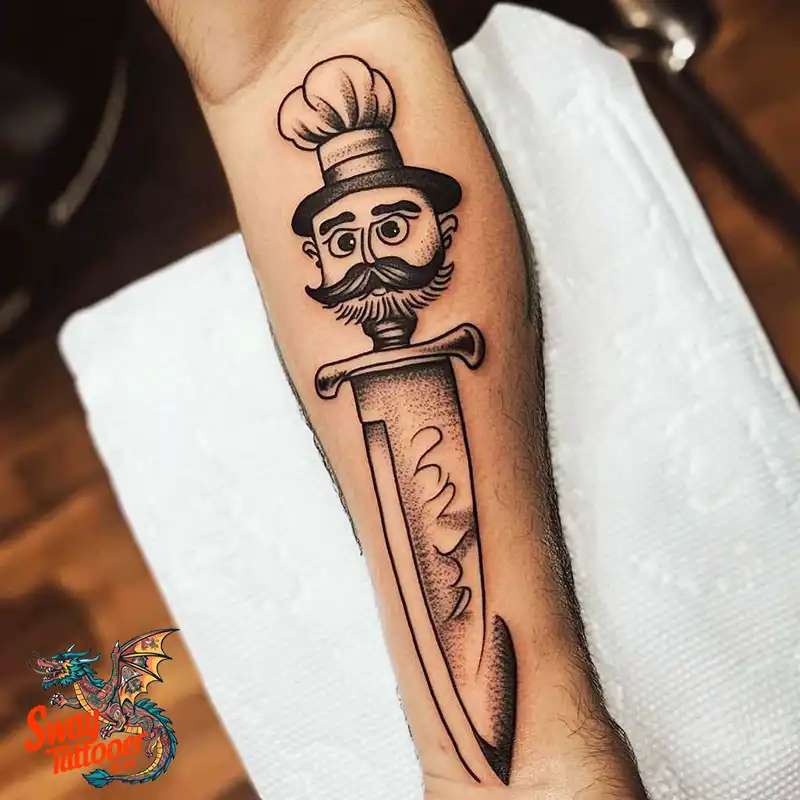
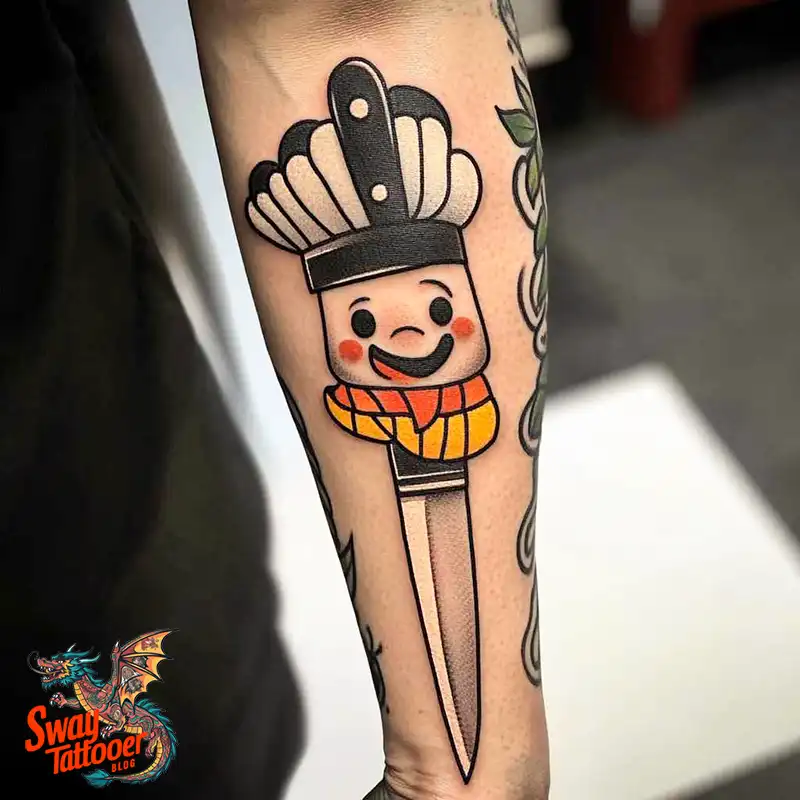
Finding Your Culinary Artist:
- Portfolio
Look for chef knife tattoos that have healed well. Check the lines for crisp edges and the shading for smooth steel effects. - Kitchen Experience
Some artists work in food markets or love cooking themselves. They get the knife meaning and care about hygiene symbols. - Customization Skills
Avoid one-size-fits-all designs. A great artist will add your initials on the handle or carve a special date into the blade.
Final Thought
When you choose a chef knife tattoo, you claim ownership of your kitchen story. It tells others, “This is who I am—a creator of flavors, a master of tools, and a keeper of tradition.” Wear it proudly, care for it well, and let it grow with you.
No matter where your cooking takes you—home kitchen, food truck, or fancy restaurant—your tattoo remains a trusty companion. It holds the memories of every chopped pepper, every simmering stock, and every satisfied smile at the table.
Your final cut? The chef knife tattoo is your masterpiece. It slices through doubt, sears in your passion, and plates up your promise to keep cooking, learning, and sharing. Let your culinary ink shine as brightly as your next perfectly plated dish.

Leave a Reply